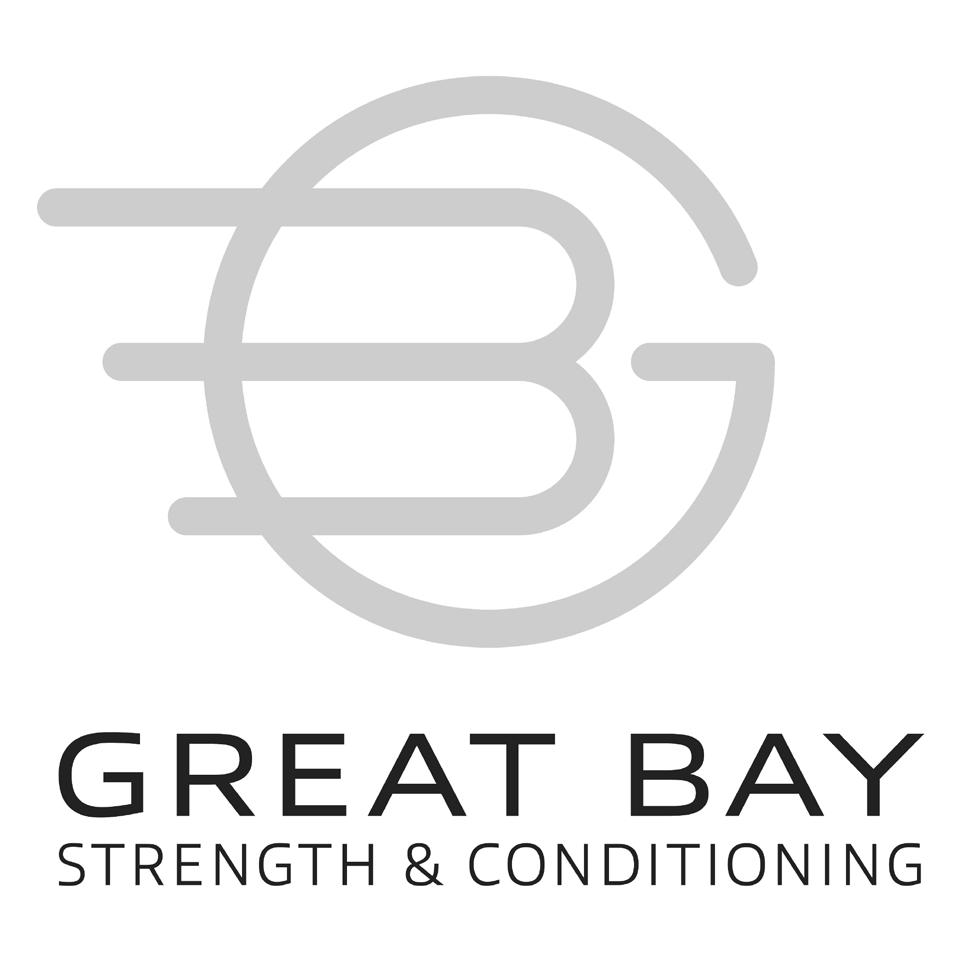Winter 2020
Mouth of The River






Meet the Staff pg.1 COVID Response pg.2 Greenway Trail pg.6 Climate Change pg.8 ORTV pg.10
Dear Reader,
Mental Health Q&A pg.11 Towle pg.14 Online Learning pg.16

Donuts pg.18 Forgiveness pg.22 Plants pg.24 Reading pg.26 Genderless Fashion pg.30
Sus Club pg.32 TikTok pg.34 Coaches pg.36 Track pg.38
We hope this issue finds you healthy, warm, and excited to read our second issue of MouthoftheRiver . Once again, this issue was produced entirely over Microsoft Teams calls. Although these circumstances can be challenging at times, the staff has continued to set the bar high with each story, which is definitely reflected in this issue.
Our cover story, “The Greenway Trail,” written by Ethan Wilson, features a new local project which provides downtown Durham with access to a large network of local trails. The front cover was shot by Ethan Wilson, with the back cover created by Liam Ashburner, all with help from the staff’s creative team. The cover captures a snapshot of one of the many local trails our community has to offer.
We are proud of the wide variety of stories the staff publishes each issue, and this issue is no exception. You will find all types of stories, including a story on the ORCSD community’s response to decisions regarding the return to school, a mental health Q&A, and a ranking of the best donuts on the Seacoast. Due to this variety, we’re confident you’ll find something (and hopefully multiple things) you love.
A huge thank you goes out to all of the businesses who have generously sponsored our publication this issue. All sponsors can be found in the back of this magazine, and on our website under a dedicated sponsors tab. If you are interested in sponsoring Mouth of the River for the coming issues, or in subscribing to the publication, contact Ethan Wilson at mouthoftherivermagazine@gmail.com.
All stories from our last issue, along with all of our current and past stories, can be found on our website: mor.news. Make sure to also follow us on Instagram and Facebook to keep up with all things MOR
On behalf of the entire staff, thank you for reading, wherever you are, and whoever you are. We hope you love our second issue of Mouth of the River.
Stay tuned, Emily Hamilton and Holly Reid, Co-Editors in Chief
Mouth of the River seeks to reliably inform the student body, as well as the surrounding community, of interesting and newsworthy content in a modern, compelling format. Our goal as a staff is to give voice to the stu dents of Oyster River, and have it heard by all our students. The opinions expressed in Mouth of the River represent those of the writers and staff.

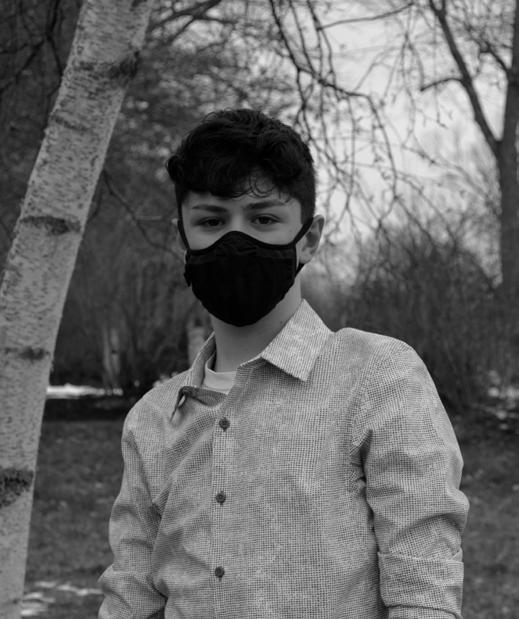


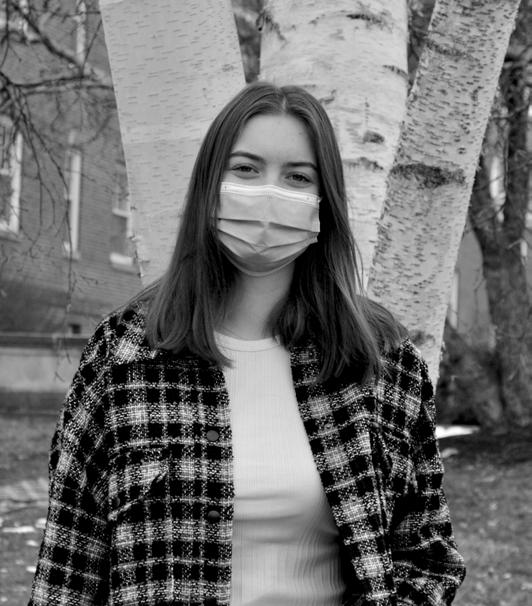
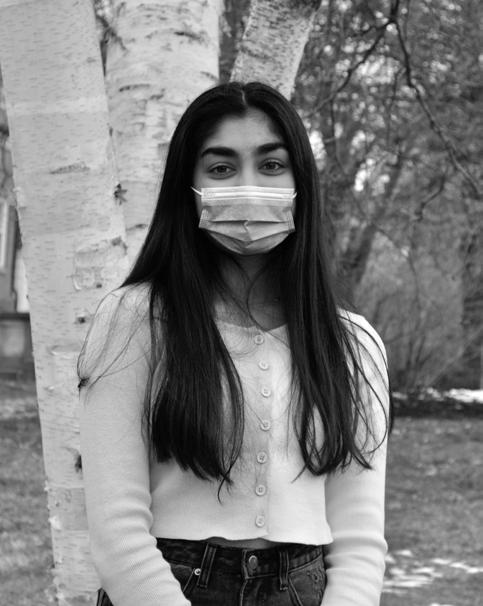
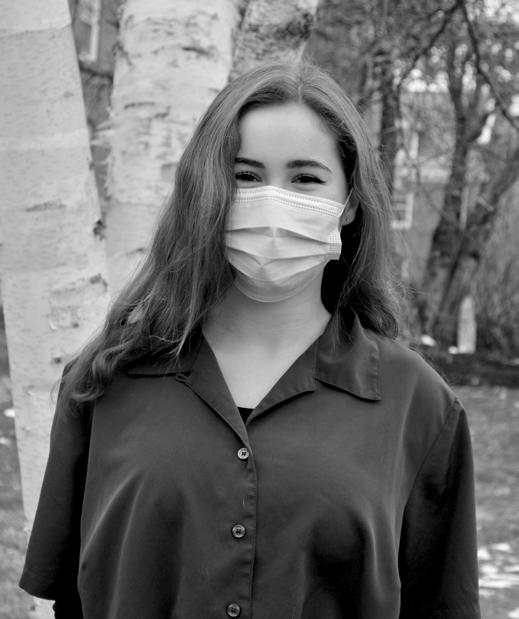
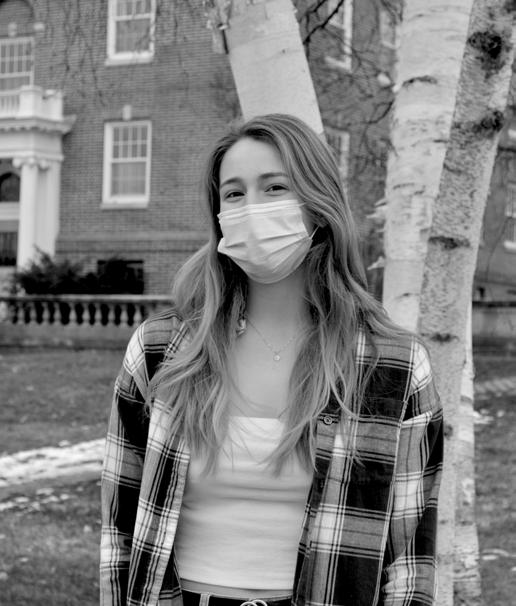
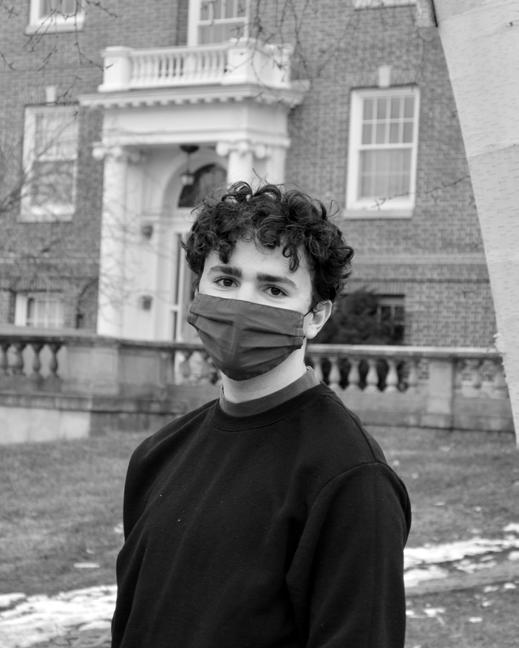
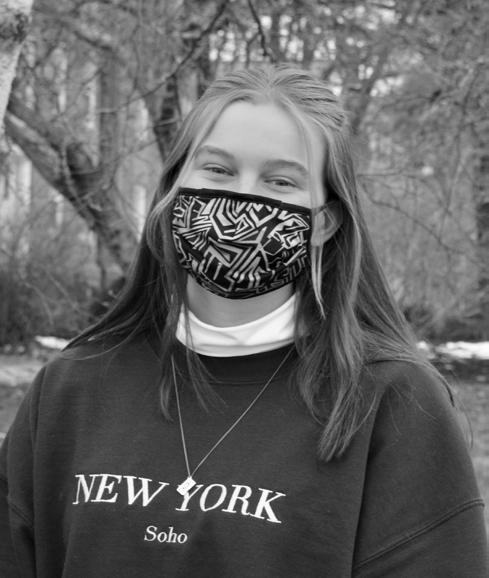
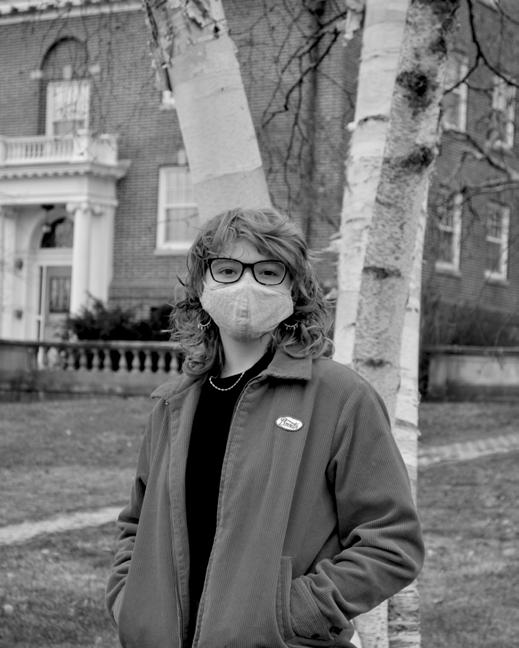
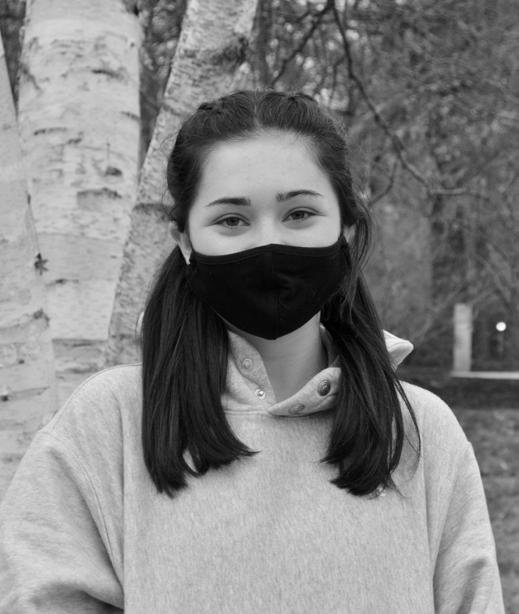


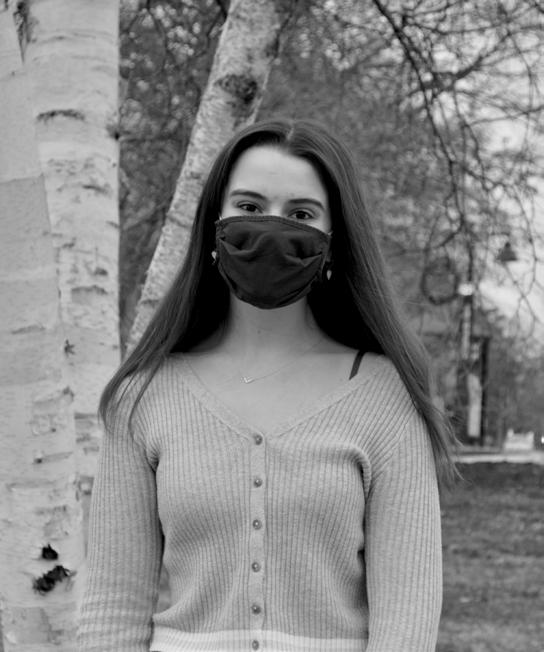

The decision about whether or not to go back to school, and how to do so, is unlike any issue previously presented to the ORCSD School Board. This has been a hot topic among the Oyster River community since the summer, and continues to be discussed as we are in the second semester of the year. Through public comment at meetings, emails, phone calls, and social me dia threads, members of the Oyster River community continue to react to these decisions, leaving school board members, adminis trators, and teachers to evaluate all of these opinions. While much of the feedback is respectful and constructive, some head towards personal attacks against decision makers. Within this story, we will dive into how the different responses, and ways they have been presented, affect our community and the way this pandemic is being dealt with.
This article will be focusing on the community’s response, as of mid-January 2021. More information on models presented and past decisions can be found on the School Board’s Agenda and Minutes page on the ORCSD website.
We would like to preface this section by saying we will not be able to express every viewpoint that people may have. We hope to cover the most common opinions that have been expressed to the Board and the ORCSD administration.
There has been a vocal group who has urged the Board to reopen schools. Most of those who have expressed this opinion feel there needs to be a choice. They understand that some people don’t feel comfortable, but for those that do, they feel they are not being accommodated. At the November 4th Board meeting, Jason Piparo stated: “I completely understand and support those who choose remote learning in order to mitigate the risk of contracting and spreading COVID-19 [...] The mission of the ORCSD is to ‘engage every learner.’ I’m here tonight to tell this Board that we are failing in that mission if we continue to deny our students a chance to attend in-person classes. Providing for those families that continue to be remote can not mean that my children will be held hostage by a minority opinion, so long as there is compelling evidence that in-person is viable, preferred, and more effective.”
In March of 2020, the ORCSD made the decision to make the switch to remote learning due to the COVID-19 pandemic. Although it began as just a three week break from in-person learning, the district ended up staying remote until the end of the 2019/2020 school year.
Over the summer, conversations began on whether or not students would continue with remote learning, go to school in a hybrid model, or attend school fully in-person while maintain ing COVID-19 regulations. Currently, there are some targeted learners coming into the building multiple days a week for in-per son instruction. However, the majority of students are learning from home the majority of the time. As the School Board began discussing whether students would be returning to school come September, community members began to speak up and voice their various opinions during the public comments section of Board meetings. Some believe that students should be in school due to a variety of factors such as social-emotional wellness and academic health, while others feel that the safest option is to maintain a remote learning environment. Additionally, there are many who are somewhere in-between. Whether or not students are in the building for learning has led to strong reactions from the community, creating tension between parents, teachers, and administrators.
BackgroundWhile the most vocal group at School Board meetings has seemed to be those in favor of returning to school, there is also a group of individuals who do not feel comfortable having their children return to in-person learning. Parents against going back to school have a few key points, including the opinion that there are other ways to enrich students outside of the classroom, and it is not safe to return right now. During the public comments section of the January 6th School Board meeting, Gianna Gelsy read a letter with multiple signatories to the Board expressing this perspective. “While we can all agree that the ideal situation is for our students to be in person for learning, it is not possible for students to learn if they, their caregivers and family, and their teachers are ill. The simple desire to have our children in school is not a justification to do so.”
Loren Selig, ORCSD parent of two, shared similar hesitation to Gelsy, and said, “personally, I’m not comfortable having my kids come back to the building. Until we know that every student is being tested regularly, every staff member, every faculty member, I’m not comfortable. I see the pictures of other kids and other parents out on social media at big group gatherings [...] I don’t want to be put in the position where I either have to homeschool my child, or find another alternative. I really hope we continue to do what’s absolutely in the safest interest of our children, not just trying to meet the needs of potentially a vocal few.”
Piparo mentioned not returning to school was a “minority opinion,” Tom Newkirk, School Board Chairman, expressed that in actuality, “when you’re on an edge, you probably are more vocal
How the community’s response to decisions regarding the return to school has impacted decision makers, students, families, and educators.
than if you’re in the middle. There is a big middle group that does not want to go back unless things are really safe, who have found that maybe remote learning has not been perfect, or maybe not been good for all, but has worked better than you would think from the public comments.” Board members expressed that they receive emails, letters, and phone calls behind the scenes from all perspectives, including those in the middle, who do not feel strongly either way. However, all the public sees is those on either end of the spectrum because those on the extreme ends tend to be the people who feel strong and comfortable enough to vocalize their opinions on the issue.
Selig mentioned that she hopes the Board does not act in the interest of one group of people. Dr. James Morse, ORCSD Super intendent, shared that he will continue to consider all individuals and circumstances. “I had an email from a father who said “I’m willing to put my child at risk, and I’m willing to be put at risk. I want school to open.” But I don’t work for that one family. I work for the collective community. I can’t respond to one person’s inter est, I have to respond to the collective interest.”
For years prior to the pandemic, the ORCSD School Board has dealt with many issues, where many different opposing viewpoints came into play, however never to this extent. For example, Morse referenced the later start time conversation from a few years ago, and how different the current returning to school conversation is. “Historically in this district, when people disagree with me it’s a pretty intellectual conversation, meaning that they’re challenging my assumptions or my research [...] This has been far different.
kinds of research about why I should take the district in a differ ent direction. This is different. People really have been agitated, they’ve been angry, and they have shared that anger.”
Michelle Dunbar, parent of four, is one vocal individual who has shared their anger. During the public comments section of the December 16th School Board meeting, Dunbar said, “everyone out there that’s watching. Please do not give up on this fight to do what’s right for your kid. You can stop funding the PTO. The second call to action: you can actually write to the individuals in the school board who have voted against this back in October. The four of them, you can ask for their resignations. Please do that. I also need another group of people to start a GoFundMe page, so that we can get legal representation [...] If these school board members will not resign, we will force them to resign. We will not be held captive any more and the kids’ health are at stake.”
While Morse says that he is happy to receive feedback based on his decisions, non-constructive attacks only take up time and don’t move anything forward. “It is a problem in the sense that it’s taking up an enormous amount of time because I do want to be respectful of people’s opinions and respond to them. On the other hand, it’s not going to go away because anything short of bringing everybody back isn’t going to satisfy some people,” said Morse.
While Dunbar expressing the desire to take legal action is among the more extreme responses, Denise Day, School Board member stressed that the majority of feedback has been civil. While there has been hate and negativity, it’s important to put that negativity in context. “The vast majority [of people] have abso lutely been civil, even if they’ve spoken very strongly. We’ve had a couple that have kind of crossed that line into not-so-helpful, and somewhat negative [...] We have different opinions at times, but it’s important if we’re going to have constructive dialogue about that so that we do maintain civility,” said Day.
Public comments aren’t the only approach people take to
The pandemic has been very, very stressful on families. It’s one thing to talk about a late start. That may have been a big deal for some and less of a big deal for others, but the pandemic is cutting right to the heart of a home [...] If you have little people at home, and you’re thinking about ‘how am I going to supervise my child? I have to go to work,’ that cuts to the core of family structure and the support the schools provide.”
One person who has received the majority of this negative feedback is Morse. “In my experience in the past nine years in this district, all of the discord has been civil. It’s been ‘I disagree with you and this is why,’ or they’d write me a lengthy email saying ‘I wish that the district would go in this direction’ and give me all
expressing their opinions regarding the Board’s decisions. Board members and administrators have received emails, letters, phone calls, from all types of people, and have listened to the community members speak during the public comments section of Board meetings. Most of these responses have been civil, respectful, and the majority of parents express their appreciation for the work all are doing, even if they disagree. As for the overly negative responses, some feel they have gotten out of hand.
“I think with some people [there needs to be a bit more ci vility,] when people say to us “if you voted this way, you should resign.” I’m not too upset with people talking about their kids, if they’re really upset and if they feel bad for their kids. It’s hard
“If these school board members will not resign, we will force them to resign. We will not be held captive any more and the kids’ health are at stake.”
to hear that, but that’s the reality. When people say things like ‘basically you’re just caving into this group’ or ‘you’re not reading the research,’ we are. I think part of it is just cumulative negativity is hard. [...] People are upset with what’s happening with their kid, they have a right to say that. We’re public officials, we’re adults, we can take it,” said Newkirk.
As Newkirk mentioned, these individuals are public officials, who have a job to do. Kara Sullivan, ORHS English teacher stressed this, and said, “I definitely think people have a right to public comment, but they also have a responsibility to make sure their public comments aren’t hurtful to others. People are just trying to do their job. The School Board is trying to do their job, the administration is trying to do their job, and I don’t think the public comments are fair,” said Sullivan about the public com ments that are hurtful, and overly negative.
While much of the response from community members has been civil and constructive, some decision makers, including Morse specifically, have seen some responses turn negative, as many parents and other community members are filled with anger during this time of heightened emotions.
School administrators and Board members aren’t the only peo ple who have been receiving negativity during this time: teachers also have. At this time, teachers don’t have much more, if any, information than what is available to the general public. Howev er, they have felt pressure from the community to have answers. “I’ve been balancing this teacher-parent thing for a long time, but I don’t think it’s ever been this difficult for me. Anywhere I go, someone asks me about when we’re going to be back in school, as if I know, but I don’t know,” said Sullivan, parent to two sons in the district.
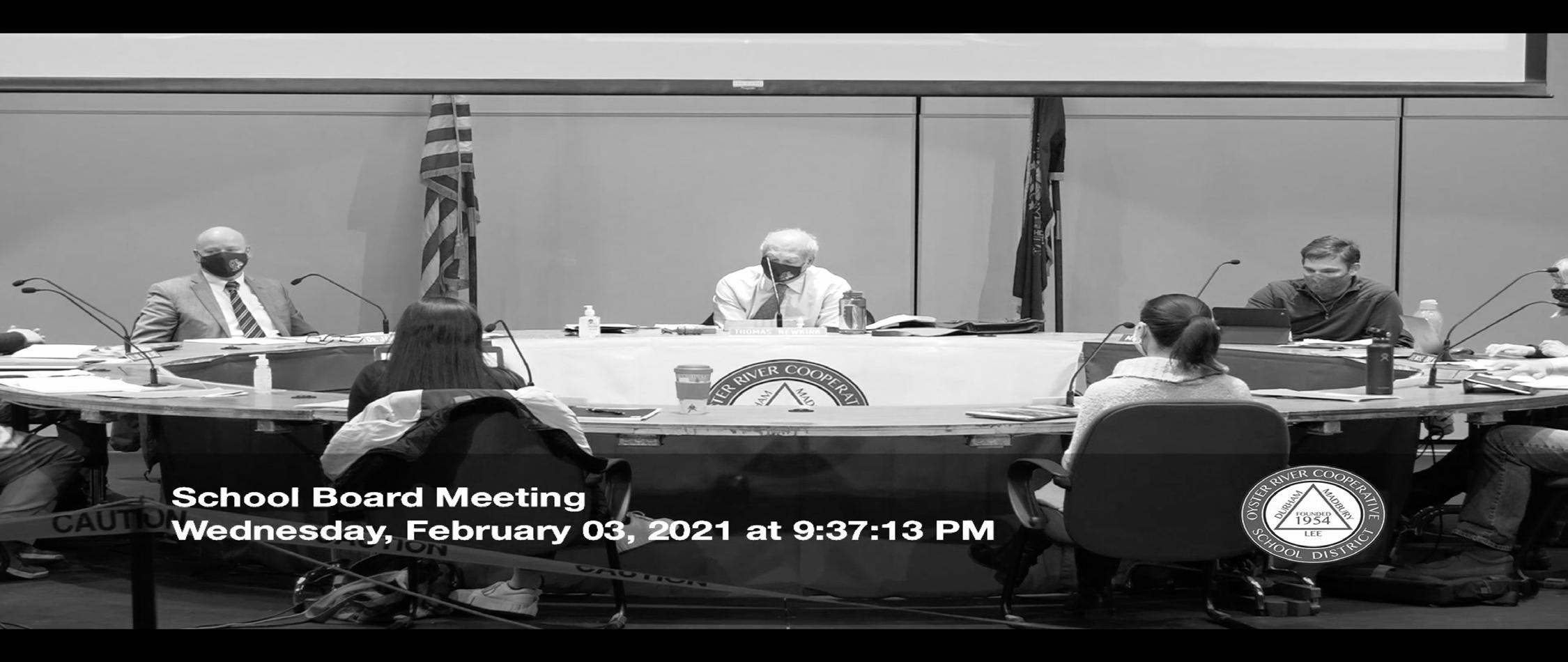
Additionally, there is a perception that teachers do not want to return to school at this time. “Yes, we are in a crisis, but it is a manageable crisis. The rights of the children supersede this. What we’re having here is we’re having a battle of the wills. The teachers won’t teach. The parents want their kids in school,” said Dunbar.
Sullivan gave an educator’s perspective on this statement, and said, “People generally know this, but there has been this growing
perception that teachers don’t want to go back to school, and that that perception is way off. As a parent, and as an educator, I know how difficult this has all been. I would much rather be teaching in my classroom to my students, but we’re weighing a lot of options and trying to do the best we can for our students.”
Since last summer, a task force at ORHS has been meeting regularly to support teachers and families with the different plans approved by the Board, as well as to help Suzanne Filippone, ORHS Principal, with plans that she presents at meetings.
Celeste Best, ORHS science teacher and technology integrator, said, “[The task force] is trying to come up with the best option in a bad situation. All of us know that this isn’t what we want to be doing… Our task has been to try to acknowledge all stakeholders and find something that works, even just a little bit, for them,” said Best.
Some teachers, like Sullivan, would like to share their experi ences, and potentially clear up any misconceptions, with the pub lic. However, many are uncomfortable putting themself in a place to speak on the issue. “I think in the big picture, you [students] are all dealing with a pandemic, and [my sons] are doing pretty well with that, and so I’ve wanted people to hear that from my perspective as a parent. But, there has been a tremendous amount of anger, and I think really strong, and sometimes inappropriate kinds of engagement in public comment, and I just did not want to put myself in that position,” said Sullivan.
Many teachers have not faced negativity from parents directly, however are upset to see those who have. “It was just really hard to hear because [Morse] is being very brutally attacked. I’m all about differences in opinions, but when it becomes a personal attack, that’s really hard to hear. All of my administrators are someone I really admire, and I could not do their job,” said Best.
are going to react [to crisis] in three ways. They’re going to kind of retreat or isolate, they’re going to go with the flow and be neutral, or they’re going to fight. It scientifically
“People
makes sense that we have a population that is in the fight mode of a response to feeling unsafe or in a crisis,” said Kimberly Felch, ORCSD Counseling Director.
As Felch mentioned, there is a group currently who is fighting: an anticipated response. While the negative response has been hard to hear at times, Morse understands that this is unlike any other issue and affects people greatly. “This impacts people on a

Board adopted a set of metrics relating to COVID-19 that take certain factors, including positivity rate, hospitalization rate, cases per 100,000, and testing availability, into account. “We as a Board adopted this metric to help guide our decision, and I think that helps to take some of the emotion out of the decision and ground it more in facts. Not to say it is 100% based on these metrics, because I think in a situation like this, it is always a balancing act
very fundamental level. It’s about child care, it’s about education, it’s about the things that we all care about, it’s about food security, and some of our families are struggling economically. When peo ple are screaming at me, or pointing their finger, I try to remem ber that this isn’t the way they normally behave. This is a person in crisis,” said Morse.
Filippone views the backlash as a reaction to overwhelming emotion. “This is really emotionally charged, and any time that you have anything that’s emotionally charged you tend to see those extremes [...] It’s really hard to moderate yourself during a crisis, and I think that tends to be why you see those extreme emotions.” She continued on to say, “a pandemic is very much be ing in a crisis for an extended period of time and when you’re in a state of crisis, people have a tendency to respond differently than they would otherwise. I think that it’s, in some ways, not surpris ing that people would be so emotionally charged during this time because of everything that’s going on.”
Felch offered some advice for those feeling especially frustrat ed, and said, “I think the extreme response is normal for some folks. What’s not healthy is to hang on to it when you have no control over it. It’s really about focusing on what you control, focusing on, as an adult, being a role model for your children, that when things are hard, and don’t go the way we want, we have to come up with ways with how we are going to cope.”
While Felch, Filippone, and Morse are not surprised by this response, some of these responses have crossed a line from emo tional statements to personal attacks on decision makers and can not be excused, regardless of how difficult this time is for all.
In the meantime, while decisions continue to be made, one way the School Board is working to alleviate some of the stress and tensions between community members is to look at the numbers, or metrics, alone, without taking opinions into account. “It’s easy to kind of go off into emotions and I think it’s important to look at what the facts are,” said Day. In order to do this, the School
of trying to understand that there is a cost to staying remote, even if it is the safest thing to do,” explained Day.
Additionally, the School Board values feedback from all, and encourages more students to speak during the public comments section of their meetings, as they are the ones experiencing the results of their decisions. “I love it when students let us know what they think. Students sometimes are hesitant, and I very much appreciate it when students either write us letters, or come to the School Board meeting, and speak during public comment. I would definitely encourage any students that want to let us know what you think, please do so,” said Day.
As we reflect on these responses, it’s important to remember to put this negativity in context. The majority of those who have spo ken up have been respectful and civil, regardless of a difference in opinion, which is always appreciated by decision makers. We hope this story gave you some more insight into the various community responses to the district’s decisions regarding the return to school thus far. This issue is constantly evolving. We have reported on the responses as of January 2021, and as COVID-19 numbers shift and ORCSD’s schooling models continue to change, there will surely be more response from the Oyster River community.
After writing this article and hearing opinions from all sides, our main takeaway is that this is a very emotionally charged issue. Many are not surprised that there has been an extreme response, due to the strain the pandemic has put on every family in a unique way. Through conversations with administrators, teach ers, and community members, we’ve learned it’s okay for people to have a response, but it is important that everyone maintains civility for the sake of coming together during this crisis. As stu dents at the high school, we’ve seen the impact of this division on our teachers, peers, and families, and hope that moving forward, everyone remembers to consider all sides of this issue and how others are positively and negatively impacted by these responses.
-Emily Hamilton & Holly ReidImage from
February 3rd School Board Meeting
“There has been a tremendous amount of an-
ger, and I think really strong, and sometimes inappropriate kinds of engagement in public comment.”


Durham’s new greenway trail will open up a large network of local trails with the addition of a new bridge. Normally, those wanting to access trails from town would need to drive to individual trailheads all over. This new project is not only a more environmentally friendly solution, but makes accessing the many trails our community has to offer that much easier. Currently, there is a very exciting project going on in Stevens Woods, the newest property ac quired by the town of Durham. This property is located right behind Orchard Drive off of Mill Road and runs alongside the Oyster River. A 0.3 mile trail was constructed on the property which connects to the greenway trail. The trails it will connect to include popular trails such as East Foss Farm, NH Fish and Game’s Beaudette property, and the many trails on Bennett Road. This project was based on a concept by both Dennis Meadows, a former UNH professor, and John Nachilly, a member of both the Durham Conservation Commission and the Durham Land Stewardship Committee. Mead ows had the idea for a bridge that would connect downtown to miles of trails, where Nachilly had an idea for the greenway trail. “I defined the trail route, and worked with Ellen Snyder Durham’s Land Stewardship Coordinator to coordinate volunteer days to
construct the Stevens Woods trail portion,” said Nachilly “This will offer a greenway option for getting from downtown to Doe Farm, rather than having to drive and park at the Doe Farm Parking lot,” said Nachilly. Currently, the trail is usable but it will be fully completed within the next year.
In order to access this new trail, a new 100 foot aluminum pedestrian bridge has been con structed over the Oyster River. “It will be named the Kenny Rotner bridge, after a Durham resi dent, a physician, who was very active in public affairs. He was on the town council, he was on the School Board, and he did many other things for the town, but he died of cancer late last year. It was decided by the town council to name the bridge after him,” said Meadows.
The Kenny Rotner bridge is vital for allowing people from downtown to access the trail. The bridge, which has already gotten a lot of use, was built at the end of Thompson Lane on the Stevens Woods Property, a process Meadows has been in charge of. Although this bridge is very beneficial to the community, a lot of money went into building it.
According to the town of Durham website, “funds for the aluminum bridge and abutments, engineering, permits, and related costs are primarily from private donations and grants,
including an $80,000 grant from the NH State Trails Program.” The total cost of the bridge and construction is going to end up being around $260,000 explained Meadows.

The land, previously owned by ORCSD, was either going to be sold for conservation pur poses, or to developers. Community members wrote a letter to the ORCSD expressing their concerns about the land being sold to develop ers. Malin Clyde, a resident of Orchard Drive and a member of the Durham Land Stewardship Committee explained that many people in her neighborhood had been crossing the parcel to access the UNH trails beyond it.
In 2019, Clyde got 12 others in her neighbor hood to sign the letter requesting a trail ease ment. “When the school board received the letter, they started discussions about the land, and Meadows proposed the idea of protecting the entire parcel and using the land as a way to connect both sides of the Oyster River with a foot bridge,” she said.
In 2019, the ORCSD decided that if Durham wanted to conserve the land and use it for recreational purposes then they would sell it to them for half of the appraised value at $150,000. This was an agreement that was negotiated by Mead ows.
Clyde has been a major part of the fundraising for the land. She has been working on raising money and coming up with a plan for the trail to go over the Oyster River. She has worked to fund raise for many other projects for the Durham Land Stewardship Committee, and most of the money comes from private dona tions. “It is pretty amazing how generous people are, especially for trails. People get excited about it,” Clyde said. This has been a collaborative project by many organizations such as the Durham Land Stewardship Committee, UNH, NH Fish and Game, and Eversource. All of these groups have helped out with maintaining the network of local trails and constructing the new
ones. The town of Durham has an easement deal with the UNH, which allows UNH to access their MacDonald property more easily using the Stevens Woods land. Clyde explained the impor tance of collaborating with other people for these projects. This is key because if there isn’t that collaboration, then people who own different properties could be working on different things on the same trail.

According to the Town of Durham website, “Eversource provided a $5,000 grant to the Town as part of their Seacoast Reliabili ty project, which will be used to build a trail bridge across the LaRoche Brook on NHFG’s Beaudette parcel off Bennett Road.” The new bridge across LaRoche Brook is at the end of the gre enway trail and will connect to the other trails on Bennett Road. Nachilly, along with NH Fish and Game, NH Department of Environmental Services, and Eversource have all been working to construct this bridge.
Clyde is very excited about what it will offer.
“This means that all the people from the faculty neighborhood and downtown will be able to go on this huge number of trails that are owned by UNH and Fish and Game, and the Town,” she said.
Corum Nichols (‘21), a Durham resident said, “[The greenway trail project] would be helpful because so many trails can be more easily ac cessed for recreational activities by the different members of the community, helping us connect and get into the outdoors at the same time.”
Be sure to check out the newly completed Ken ny Rotner bridge and the network of trails it pro vides access to the next time you’re in downtown Durham.
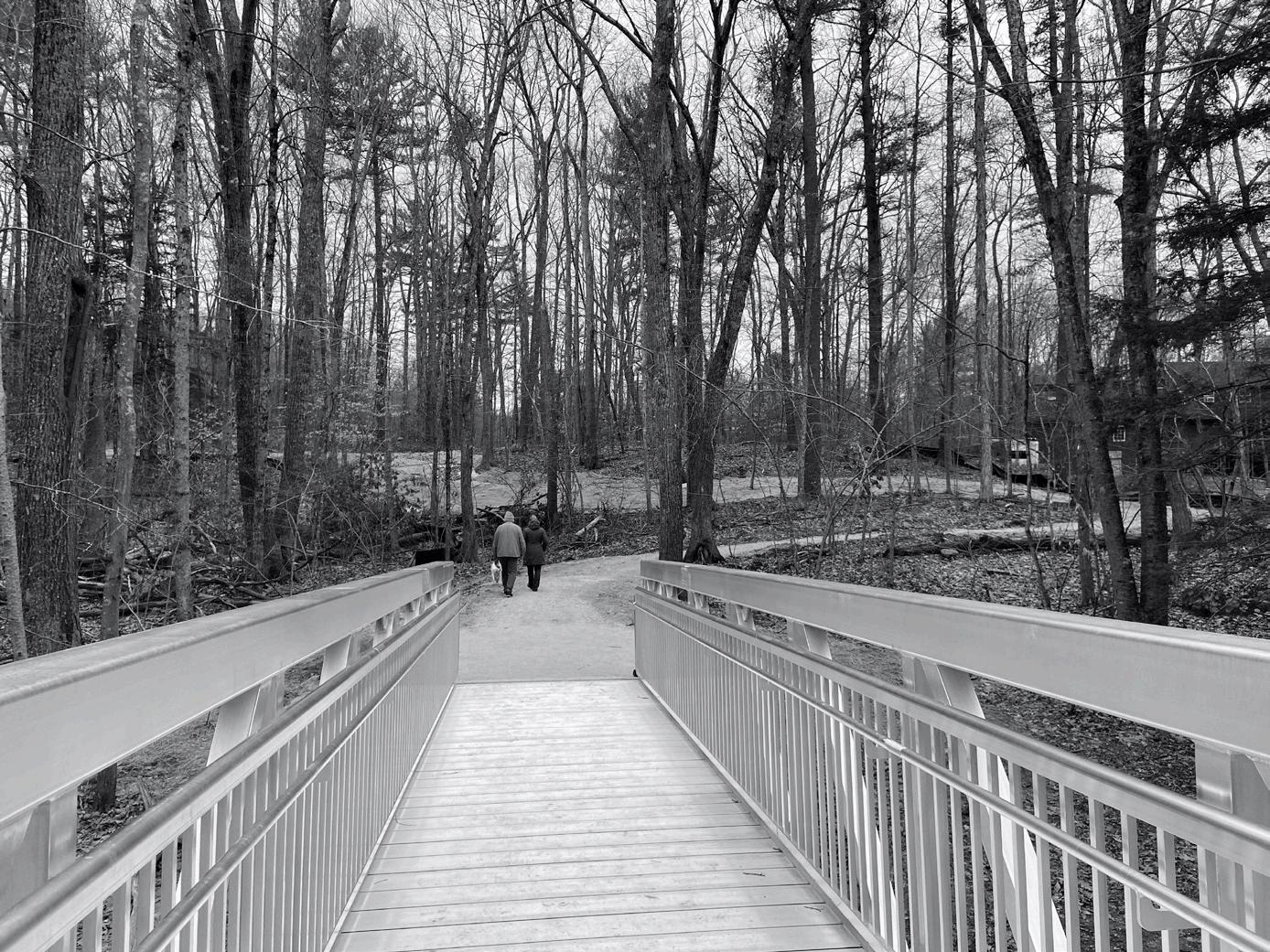 -Ethan Wilson
-Ethan Wilson
Climate change is serious, everyone knows that. What they may not know, though, is just how serious it is.
Despite national cov erage of the climate crisis, only a few recognize the severity of the issue. These researchers and activists are urging communities around the world to ad dress it before it’s too
and Atmospheric Admin istration (NOAA) the average sea level rise in the 20th century was 1.7 mm per year. For New Hampshire specifically, that meant a sea level increase of 7 inches since 1950.
The state isn’t only investigating these issues for the sake of towns on the seacoast. According to Kirsten Howard, the late. In New Hampshire, citizens are engaged at both a state and local level, collecting data on the changing environment to raise awareness on both the global and state-specific impacts. These researchers and activists hope that it will convince others to start taking action in the effort to save our planet.
Being on the coast of the Atlantic, in a highly-populated area, New Hampshire is susceptible to various effects of climate change. Locally, there are many different groups and organizations representing those impacts. However, New Hampshire State Government is more focused around the most urgent issues, including sea level rise.
One of the first moves the state took to address this was in 2014, when it put together a report titled “Sea-Level Rise, Storm Surges, and Extreme Precipitation in Coastal New Hampshire: Analysis of Past and Projected Trends.” It covered changes in sea level rise, and the influence that has on things like weather patterns and anomalies. As aware ness surrounding climate change rose in the following years, New Hampshire state legislature passed RSA 483-B, an act that ensured that the data the 2014 report covered would be updated every five years.
The state’s first follow-up report was finished in 2019. Researchers brought in to collect information and analyze data were concerned to find that trends established in the 2014 report differed from those of the new 2019 one. David Trubey, an Archeologist and Review and Compliance Coor dinator for the New Hampshire Division of Historical Re sources, and Review and Compliance Coordinator for the New Hampshire Division of Historical Resources, noticed those changes immediately.
“The issue is much worse than what [researchers] thought five years ago…For example, the projection for sea level rise, and what that will do for the environment, is huge,” he said. The rise Trubey is referring to is predicted by the 2019 report to be somewhere between 1.3 and 2.3 feet by 2050. In comparison, according to the National Oceanic
Coastal Resilience Coordinator for NHDES and contrib utor to the report, inland communities are just as at risk. Howard said, “the research shows that as sea level rises, fresh water underground rises, and that influences places as far inland as three miles from the coast. Folks living there might not realize that sea level will affect them too.”
Sea level rise has already had a dramatic impact on the New Hampshire coast. According to a report published by the NOAA, tidal flooding has increased by as much as 260% in some parts of the state since 2000. This includes increased storm surge flooding, like the state saw with Hurricane Sandy in 2012. It also means flooding regard less of rain, according to SeaLevelRise.org. When tides are high enough, ocean water pressure backs up the drainage systems designed to empty out into the ocean. This creates an opportunity for flooding at any time.

The state is currently working to reduce further dam age in high-risk areas. Some of those communities include Hampton, which is, according to Howard, implementing protocol like raising roads, building sea walls, and even evacuating neighborhoods to keep people safe. However, as previously mentioned, it’s not just coastal towns that need to prepare. Durham, for example, is in the process of updating its “Master Plan” to account for environmental changes and how infrastructure will be built around that.
Durham also has local groups taking initiatives to address climate change. Some are working in conjunction with the state on issues related to sea level rise, but there are a number of other issues being considered as well. Evelyn Ashburner (‘22) is a member of Oyster River High School’s Sustainability Club, which has been focusing on waste pro duction in the community. Last year, the Sustainability Club conducted a waste audit at Oyster River High School, where they found, among other things, that 7,000 lbs of organic waste ended up in the wrong bins.
“Something we see constantly is littering and waste. It’s on the beaches and in the water, and there’s ridiculous
Researchers say that preserving the relevance of climate change is key to making progress, and they’re working to continually educate citizens. One way the state is doing this is through a newsletter for the NH Coastal Adaptation Work Group. Howard and Trubey both recommend that those in terested in environmental issues on the coast subscribe. There are also plenty of local resources to engage with, including town commissions, nonprofits, and community reports.
Along with staying informed, citizens can get involved by joining local organizations that push for better environmental policy. Ashburner strongly suggests that interested ORHS students check out the Sustainability Club, which has more members this year than ever before.
Ultimately, climate activists want to see people engaged and interested in the fate of their planet. Whether that be joining a group, receivivng a newsletter, or reducing their carbon footprint, researchers encourage us to treat climate change with the severity it deserves.
- Megan Deaneamounts of trash on our shores. It’s a really big problem,” Ashburner said. “By educating our student body, we’re hoping that they will change their behavior and really think when they’re throwing things out.”
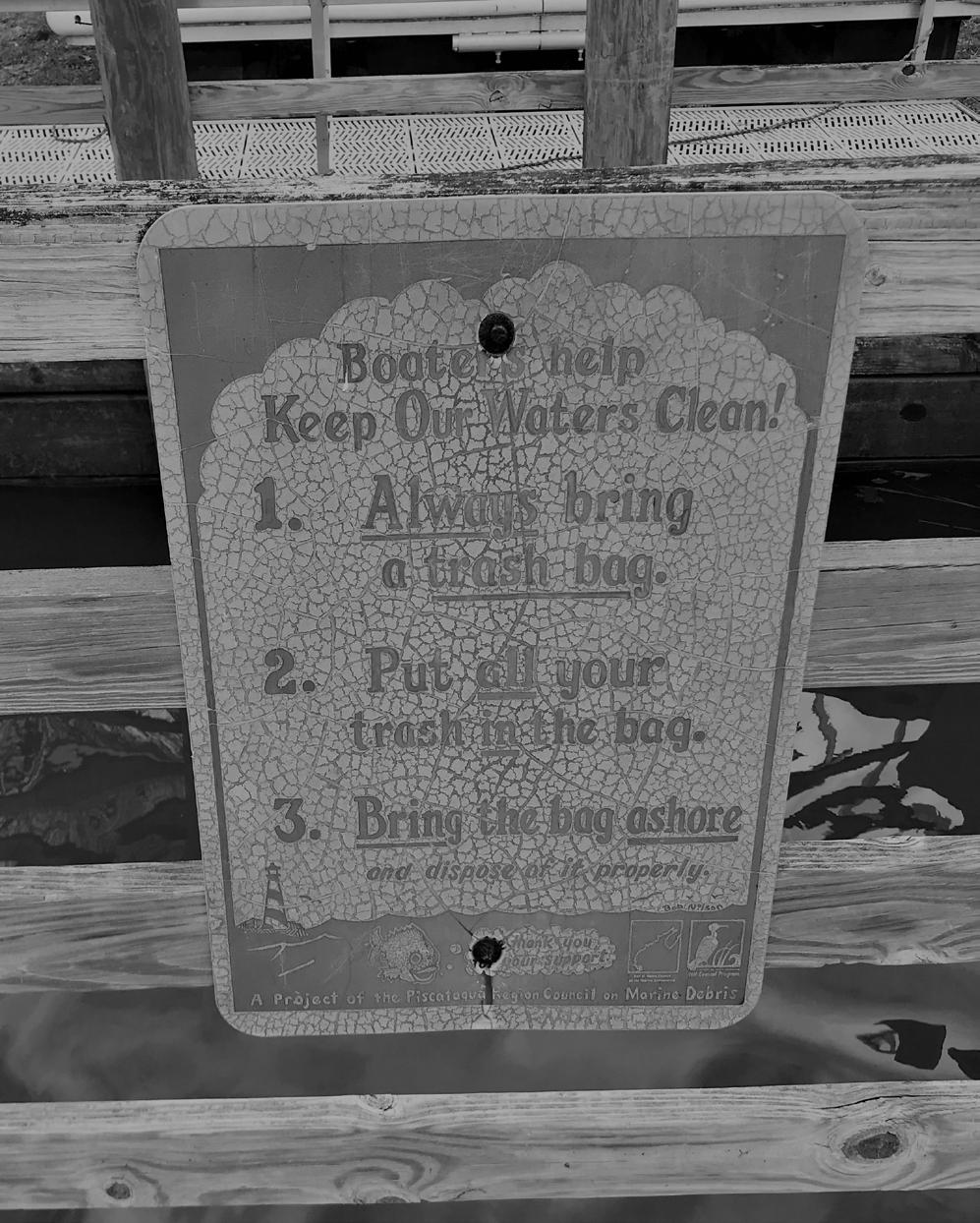
Ashburner wasn’t alone in emphasizing the importance of educating others. Lawrence Hamiltion, a UNH professor, has authored several research papers on how communities think about climate change. Hamilton found that, the less aware a community is, the less importance they place on the issue.


“With COVID-19, too, a lot of people are forgetting that our environment is still suffering,” Hamilton said. “These things aren’t going away. In fact, they’re only getting more serious.”
However, Hamilton noted that social engagement is slowly picking back up again as the world learns how to navigate the pandemic. Trubey also attested to this, mentioning how the committees he serves on are continuing to meet online. “There’s still a platform for getting the word out,” he said. “As long as people are using it, we can keep the conversation going.”
This idea of “keeping the conversation going” is critical to the mission of both state and local groups.
“These things aren’t going away. In fact, they’re only getting more serious.”

“Hello Oyster River! It’s me, Trevor Savage, back with your weekly announcements!” Savage (‘21) recites, waving to the cam era, snow falling down around him as he greets the ORHS student body for the weekly announcements. Savage is the host of the new show fully produced by ORTV, played to students during the advisory periods.


ORTV is a new class to Oyster River High School this year. Students enrolled in the course create weekly video announce ments letting students know about upcoming events, schedule changes, opportunities and other general news. In addition to the weekly announcements, the class creates a monthly, longer episode.
This isn’t the first time ORTV has existed at the school. Kathleen Young, the former Video Production and Film Studies Educator at ORHS, started the program while she was teaching. “There were so many resources [at the high school]. There was a green screen and three cameras, great DSLR cameras, audio equipment, the studio itself, and even the editing equipment. It was all pretty high-end for what a lot of schools had to work with so the capabilities of having such a show were there.” Young created the class originally as a way to get students using the equipment that the school already had to allow students to gain experience similar to that of a real television studio.
The original class was designed to highlight the interests and strengths of the people in the class at any point in time. “The emphasis was on something the students really found interesting. For instance, one semester there were a bunch of students who wanted to start up a ski club and so they did their pieces on that. Even though it’s like reporting and journalism, it’s a more visual method of storytelling.”

The original class ran for four or five years before Young left the high school in 2015. “I think part of [the class ending] was because Ms. Young moved onto another job, and the program just kind of died out. There wasn’t a lot of interest in it. In my first few years at Oyster River, there were only like 3 or 4 kids signing up for it, and you can’t really run a television production with only 4 people.” said Jennifer Weeks, the current teacher of the course. All this changed in 2019 however, when Eli Vannata (‘21) came to Weeks inquiring about the course.
“I initially found out about the class through our program of studies when I was signing up for classes for senior year. I went to sign up for the class in PowerSchool, only to find that we didn’t of fer it anymore. I talked with Ms. Weeks about it, and she decided that she would be happy to sponsor and teach ORTV if it were to occur again. I had to get a following of people that were also inter ested in the class and have them sign a paper saying that they’d be willing to take the class. All in all, we gathered enough people to start the class and so we managed to revive ORTV” Vannata said.
Savage said that he “and a few others who had taken some class es with Ms.Weeks, were all sad that we had taken all the video
classes that the high school had to offer. When we talked to her, she said we could actually reactivate ORTV if we were willing to put in the effort. We needed a minimum of 10 students to sign up, and managed to get 11. We were ecstatic to get it reactivated, and hope that we can maintain the interest in years to come.
The class has been operating partly in-person due to the COVID-19 pandemic, utilizing the school’s studio space, and partly at home. Vannata said, “I think we have done a really good job so far with the restrictions in mind. It can sometimes be more difficult to film, but overall I feel that the class runs very smoothly during this time. I feel that a large reason for this is because of how student-led it is. We mostly work on our own or with a few other students, so it’s still quite easy to coordinate with them even with COVID.”
Weeks is a remote-only teacher, so she is not able to be in the studio with the students, but she talked to administration, and got permission to allow small groups of students to go in the studio and film. “The students went in and they spent hours going through every thing in my room, organizing it and setting everything up.” Weeks said, praising the initiative of the students, “it’s pretty impressive what they’ve been able to do. I’ve just been like “you tell me what you guys need,” and I’m like the liaison more than anything.”
The class is student led and runs in two parts, ORTV 1 and ORTV 2. “What I would really love to see is for it to be a cyclical class where when you’re in ORTV 1, you are learning the ropes, and then when you are in the second half, you are in charge and are able to train the second generation. But between that, I also want it to really be what that group that year wants to make it, and I think that’s the beauty of it. Because ORTV hasn’t run in so long, it’s free to become whatever the kids want it to be,” Weeks said.
Vannata thinks “it’s very important to have ORTV, especially during the time that we are in. I feel like it builds upon our com munity and lets people interact with each other in a way that they normally can’t anymore. I get a lot of teachers telling me that they think that ORTV is the perfect thing to have during this time be cause it makes them feel like our school is back to normal again.”
To prevent the class from dissolving again, it is designed this year to cater to the students, letting them produce content on whatever their interests are. The class right now is made up of mainly seniors, which brings up the risk of having little exist ing student base to continue in future years, so Vannata says he “would all love to have more underclassmen join the ORTV team to help us get more differentiating viewpoints and to help us grow and expand the class. I hope that the class will have interest for the years to come and that students of all years will join ORTV.”
-Liam AshburnerMental health has always been emphasized by Oyster River High School (ORHS) as an essential part of our well-being. How ever, in the midst of a global pandemic, it’s more important than ever to understand your own mental health and to recognize signs of decline in others.
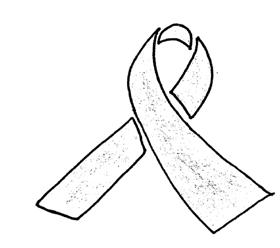

It’s crucial to take care of both our mental health in addition to our physical health, as our state of emotional well-being affects every aspect of our lives. A healthy mentality makes us more pro ductive, proactive, and able to cope with the stress and challenges that we face. In the state of the world today, we are especially
susceptible to a decline in mental health because of the increase in isolation, academic stress, and home-life burdens. It’s import ant to remember that there are people everywhere to support us, especially at the high school. Oyster River is dedicated to devel oping healthy habits of wellness in students, as well as providing support to students who may be struggling with mental health at home. To answer some of the most prevalent questions surround ing mental health during this time, we turn to the guidance of experts and psychologists at the high school.
Q: What should I do if I feel depressed? If I notice these signs in a friend, how should I seek help?
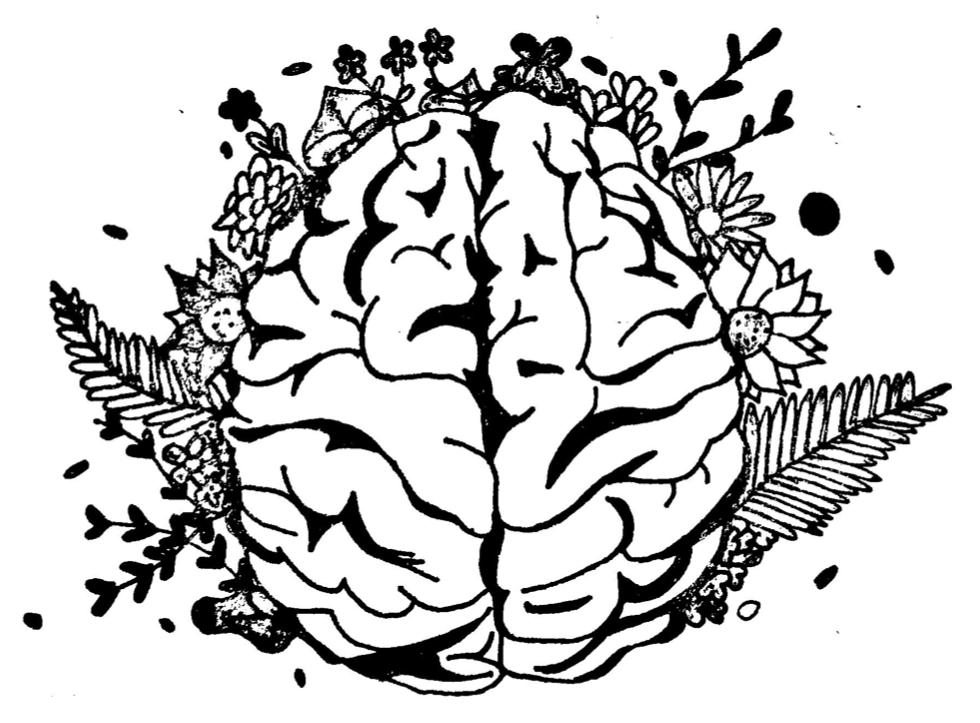
Mental health affects our emotional, psychological, and social well-being and influences how we think, feel, and act. A healthy mental state allows us to maintain good relationships, cope with stress, and make healthy choices. In addition to emotional benefits, mental health can also positively affect our physical health. According to Mental Health by MedlinePlus, maintaining a healthy mental state reduces the risk of heart disease, high blood pressure, strokes, and more.
“I think we all know that if we’re not doing well in our mental health, it impacts every aspect of our life,” says Kimberley Sekera, a school counselor at ORHS. She explains that a decline in mental health can often lead to a decrease in academic performance and motivation, along with various other negative effects. If we don’t take the time to care about our emotional health, then we lower our ability to function at our full potential.
Dr. Ryan Long, a school psychologist at ORHS, describes how an unhealthy mental state can guide us down a harmful path. “Without treatment, mental health conditions can often become worse and certainly can lead to thoughts of depression and sui cide.” Many people may not realize that they are struggling with mental health, so it’s important to understand signs of decline and to perform frequent emotional self-checks. Maintaining a healthy relationship with mental health can promote positivity in our lives and reduce invasive feelings like stress and anxiety.
Hannah Cunningham, a school psychologist at ORHS, urges students to talk to a trusted adult immediately if experiencing symptoms of depression. Though signs of depression can vary among different people, some common symptoms include a change in sleep routines and eating habits, feelings of hopeless ness, or loss of interest in the things that we usually enjoy doing. According to the article “Depression Symptoms and Warning Signs” by HelpGuide, other signs can show through an increase in irritability, loss of energy, or difficulty of controlling emotion. “It is important to reach out to an adult, such as a guardian, teacher, or school counselor, if you notice these signs in yourself or some one else… We strongly encourage students to find an adult in the building with whom they feel comfortable talking to if they are concerned about something happening in school,” says Cunning ham.
Sekera adds that, “reaching out is so important. Especially now in this remote setting, students can really feel that much more [isolated] and alone… it’s super important for students to really know that they are not alone and that there is always help.” The counseling department is always there to support students with mental health, but reaching out is the first step. Especially in high school, there is a stigma around needing help with mental health. It’s important to know that this is absolutely not a sign of weak ness, but rather a form of self-care and maturity.
Sekera offers advice for helping a friend who is struggling with mental health. “If a friend is saying things that are a little off, reach out. Err on the side of caution; if it’s nothing then that’s great, but if it is something then we want to make sure that person gets the help they need,” she says. She explains that many students are often worried that the friend may be upset with them for shar ing their feelings with an adult. “I’ve been doing this for a long time and almost never is somebody angry… they quickly realize that they are hurting and in a place where they need help. They are [always] thankful that their friend reached out for help.”
Q: How should I deal with suicidal thoughts?
“Reach out for support from a trusted adult immediately. (1800-273-8255) is the National Suicide Prevention Lifeline for
Q: Why is mental health important? Why should I be aware of it?
24 [hour] support as well,” says Cunningham. This organization provides free and confidential support to people experiencing emotional crises and is an essential resource for those who need it.
Sekera says that these thoughts “can feel very scary and [isolat ing]. I can’t stress how important it is to reach out and let some one know.” The online resource Reach Out, an Australian mental health support service for young people, suggests writing your feelings down if you struggle with communicating them verbally. After reaching out and receiving help, it’s important to keep the environment around you a safe place. Removing any harmful substances or objects can remove temptation to self-harm.
feel is rooted in the lack of a stable schedule to depend on. By cre ating a routine for ourselves, we are able to increase our produc tivity and improve our mental health.
Calendars are a common method for scheduling time for everyday activities such as schoolwork, eating, and sleeping. This time management strategy is a great way to stay organized and reduce stress. “Creating a schedule gives you structured time to get things done,” says Sekera. As an efficient use of time and energy, this structure allows us to feel less overwhelmed and more accomplished.
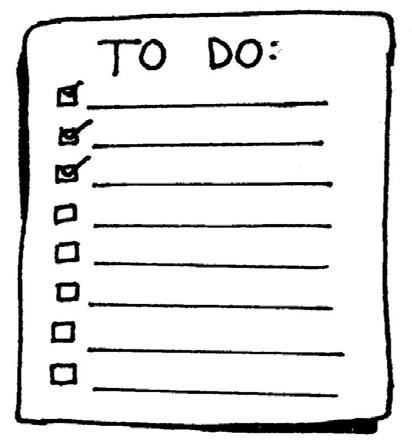
Long offers advice for reducing the impact of these feelings that can seem overwhelming at times. “I always tell students to control what you can. Staying on top of work is so important [and] taking care of responsibilities that you have control over is step number one. It is much easier and you’re much more emotionally pre pared to deal with stressors that you can’t control like parents fighting, [the] job loss of a parent, or stress about money if you’re not falling behind in school and then having to deal with that,” he says. Long explains that when we stay on top of our respon sibilities, we place ourselves in a better position to deal with the other stressors in our lives. Especially now, focusing on what we can control is so important. Worrying about issues that we can’t individually change is unproductive and wastes energy that could be used for concentrating on our thoughts, attitude, and actions in the present.
Finding ways to de-stress is essential to maintaining mental health, as it improves sleep and reduces irritability, anxiety, and depression. “People may prefer different activities, but some ex amples include going for a walk, baking, reading a book, meditat
Cunningham offers her advice on cre ating an effective and long-term routine. “Try to think about who, what, where, and when. Who do I work best around? What do I need to get done? Where is a place I can focus? When do I have time to do my work? Asking yourself those questions and then creating a realistic agenda [that includes] breaks is important for a healthy routine.” She recommends writing down and prioritizing what we aim to accomplish in a given day; that said, focusing on one day at a time is important, as it prevents us from feeling overwhelmed. She suggests setting a timer on a mo bile device for 30 minutes, working until the alarm goes off, and then taking a short break; “this may help you stay focused for an extended period of time while still allowing for breaks,” Cunning ham says.
Q: How does screen time during remote learning impact my mental health? How can I reduce my screen time? Why is it important to take breaks?
ing, talking with a friend, or hanging out with a pet,” says Cun ningham. More examples are exercise, listening to music, writing, yoga, and aromatherapy. Everyone is different, so identifying what relaxes you is key for de-stressing.
One popular practice used to release feelings of stress and anxiety is meditation. This practice is a way to relax the mind and body through breathing techniques and mindfulness. In addition to stress reduction, it has been proven to have physical benefits, such as lowering blood pressure and reducing the risk of heart disease. There are many online resources to learn and practice meditation, including the Mouth of the River article “Mindfulness Meditation” by Bella Crocco.
The physical effects of excessive screen time are not the only issues we should be concerned about; this aspect of remote learning has also taken a toll on student mental health. According to “Technology, Screen Time, and your Mental Health” by the CenterforAnxietyDisorders, students who consume more screen time experience higher levels of anxiety, depression, and loneli ness. These feelings can often develop into mental health condi tions, so it’s important to mitigate our screen time when possible to prevent them.
Maintaining a routine promotes mental health and wellness through structure and organization. Because of the COVID-19 pandemic, our busy schedules and agendas have been replaced with unstructured time. As a result of this, much of the stress we
Cunningham strongly suggests writing notes in a notebook rather than on a computer and borrowing a physical copy of a book from the library that would otherwise be read online. She recommends “trying to plan breaks in your day to give your eyes and brain a break. Sometimes it is easy to get into the habit of looking at your phone, watching TV, or playing video games during breaks or after school. However, it is important to remem ber that those are screens too.” Rather than increasing screen time during breaks, she suggests trying a de-stressing hobby that allows us to detach from our computers, such as taking a walk or baking. “Taking breaks like this will improve your mental health and help you stay more focused when it is time to work.”
Sekera expresses similar ideas about the importance of taking breaks between classes. “When you take a quick break and come
Q: How should I deal with stress and anxiety during this time? How can I de-stress?
“Creating a schedule gives you structured time to get things done.”
Q: How does my schedule/routine impact my mental health? How can I manage that?
back you’re more productive,” she says. Sekera suggests taking a moment between classes to move around the house to give our selves a break from staring at screens. According to a psycholog ical analysis by Robert Pozen, a senior lecturer at the MIT Sloan School of Management, taking a break every 75 to 90 minutes makes students more productive and focused.
Q: Why is connecting with peers important for mental health? What are some ways that I can connect with peers safely?
Jennifer Wegmann, a professor of the health and wellness stud ies department at Binghamton University, says that a “significant amount of research has shown that engaging socially is one of the best ways to cope and manage with the stressors in your life.” She says that interacting socially through apps like Facetime and other virtual platforms are great ways to safely connect and maintain relationships with our friends and family during this time.
Cunningham also adds that, “staying connected with peers is important because it supports mental well-being and helps
Sekera says identifying and focusing on the things that are positive in our life is another way to promote a healthy mentality. “It’s important to find silver linings. Otherwise, when we’re talking about mental health, all that we’re focusing on are those things that are really hard. If we just focus on those things that are really hard, it is really easy to fall down.” She explains that the question, “what are the things we can be hopeful or thankful for now, and looking forward?” is one that can be very beneficial in the effort to maintain a positive attitude.
Q: What kind of mental health support is offered at the high school?
Oyster River High School houses four school counselors, two school psychologists, and a Master Licensed Alcohol and Drug Counselor (MLADC), all available for students to access for mental health support. There are also many online resources that students and families can find on the school website. The school also provides students with connections to community support
people feel a sense of community and belonging. In a time where many people are more isolated than ever before, keeping those relationships strong can help boost resilience and reduce stress.” According to her, human connection is something that we need, now more than ever.
Long expresses that the best way to maintain a positive men tality during this time is by “taking things one day at a time… I’m looking at the light at the end of the tunnel and [keeping in mind] that nothing is permanent.” He says that it’s important to remem ber to focus on what we can currently control. We can adopt a more positive mindset by making the best out of our difficult situation and understanding that challenges like the COVID-19 pandemic are part of life.
for mental health if needed.
More specifically, mental health support at the high school ranges from advisory bystander training to private individual counseling. Through the Oyster River High School Multi-Tiered System of Student Support (MTSSS), the school brings in many layers of mental health and strives to inform and provide students with access to the support they need. Advisory activities such as suicide prevention and bystander training are considered preven tative measures for mental health. For direct student support, the school counselors are available to address the specific needs of students who are struggling. Individual and specialized coun seling opportunities are offered through Oyster River’s contract with Community Partners, the mental health agency for Strafford county, or through referrals to private therapists.
Especially at this moment in time, taking care of ourselves and our mental health is essential. If you are ever struggling, the Oyster River Counseling Department is always there to help you through any challenges. The first step to receiving help is by contacting your counselor. The contacts of the high school counselors are listed below.
Kim Cassamas: kcassamas@orcsd.org
Heather Machanoff: hmachanoff@orcsd.org

Jason Baker: jbaker@orcsd.org
Kimberley Sekera: ksekera@orcsd.org
- Laura Slama“A significant amount of research has shown that engaging socially is one of the best ways to cope and manage with the stressors in your life.”
While many ORHS students know Kevin Towle from his driver’s ed classes, many don’t realize his true passion outside of driving is cooking.
Aside from owning a driving school that operates out of ORHS, Towle is a competitive cook. He has been participating in culinary competitions across New England since 2012. Aside from winning various cash prizes, dishes, and frying pans, these competitions have given Towle an opportunity to explore what he loves outside of his classroom.
Students end up spending a lot of time with Towle since they have to meet a state requirement of ten hours behind the wheel with a certified driving instructor to get their license. Howev er, what some may not know is that Towle’s passion is cooking. “You’re going to find this very strange, but my hobby is that I’m a competitive cook,” he said.
Similar to beloved TV shows like Chopped or the Great British Baking Show, Towle explained how he started his culinary jour ney. “It started when my middle child was looking for scholar ships. She was trying to get a scholarship through Hood Milk and we were online looking at all the things she had to submit, and my wife saw that they were doing a cooking contest where you could win some cash prizes,” explained Towle. “My wife said, ‘you like to cook, you cook around the house, you should try,’ and I said no way am I doing that, that’s silly. Sure enough, the first one I sent a recipe in to, I got a phone call saying I was the New Hampshire representative for this cooking contest, and asking if I could come to compete in Portland, Maine.”
After that initial phone call, Towle traveled to Portland, and competed with people across New England. He ended up making it to the quarterfinals and taking home $100.
Towle remembers this experience well, and said it remains his favorite competition that he has ever been involved with. “You got to go and compete and be around other people. It was neat to see
how it all played out, especially when I was in the finals and they had a TV camera and you’re trying to cook, they’re asking you questions, and you don’t want to make mistakes,” he said.
Kathy Towle, Towle’s wife, always goes to these cooking com petitions with Towle, and described how well he keeps his cool while under pressure. “He is extremely patient, which you have to be. He is so patient to be able to teach kids how to drive, but also when it comes to cooking he’s more patient. It was very nerve wracking for me. I never could have done what he did.”
After the success and fun he had during his first competition, Towle figured he’d give it another shot. “[The sponsors of the competition] put you up in a hotel, they pay for your food, it was kind of a neat thing, so I said, you know, I’ll try it again next year.” Even though Towle had only competed in one contest prior, the next year he ended up making it to the finals. “I was on TV and had a chance to win $10,000,” he said. Although he came in fourth place in that competition, Towle still walked away with $500 and an increased appreciation for this lifelong hobby.
One of Towle’s favorite parts of cooking and competing is coming up with his recipes. Towle explained, “Even when I’m driving with students, we’ll be on the highway and there’s nothing for me to say to teach them or whatever, and I’ll be thinking, you know what, I think I’m going to make a maple walnut ice cream. I’ll come up with these strange flavors and then I’ll jot it down and when I get home I’ll tweak it a bit, but that’s how I come up with my recipes.”
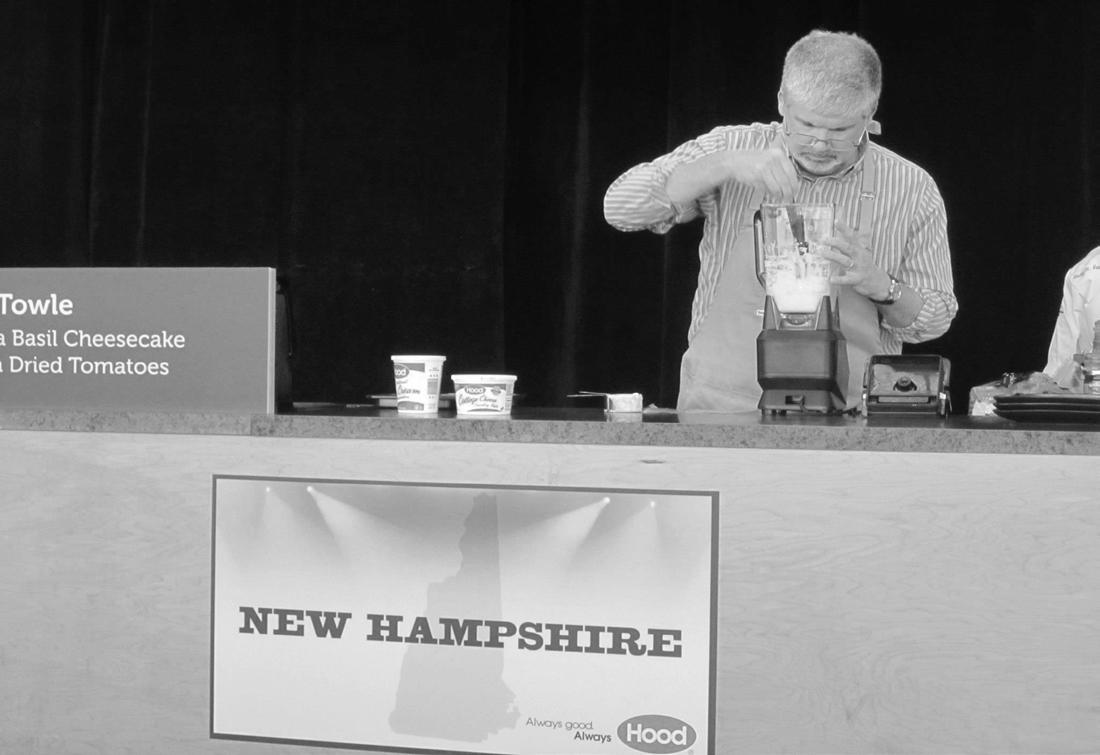
Kathy knows about these strange recipes very well, saying, “He comes up with the most, I would say they are bizarre recipes. He would tell me what the ingredients are and I would think, that’s never going to work, and then he makes the dish and it’s absolute ly delicious.” Past all these bizarre flavors, Kathy’s favorite dish is a classic. “He makes pasta from scratch and I happen to be a pasta lover,” she said.
For these competitions, Towle explained he typically goes online to see which ones are happening in the area. Through the years, Towle has been involved in different contests sponsored by

different companies, including Hood Milk, Sun Maid Raisin, and Go Bold with Butter. Towle then submits his own recipe to the contest and waits for a call or email back with whether or not he had been chosen to compete. “They call you and say you’re in the running. They may ask you about certain brands and things that you use. Then they follow the recipe and will cook it or bake it and if they have a component where you compete, they send you out to do it,” Towle explained.
As to how Towle got involved with cooking in the first place, he credits his inspiration to his mom. “She used to make wedding cakes and birthday cakes for people. My mom was a good cook and baker and she was the one who basically got me into it,” he said.
Before he even got into cooking, Towle has been a part of the Seacoast community his whole life, and was born and raised in Rochester. After graduating high school, he went to the University of Southern Maine. “I studied recreation therapy, and how I got into driver’s ed, oh my goodness, that’s a long story,” he said.
When Towle was 24 years old, he was fresh out of college, working at the Air Force base in Portsmouth, and needed money to pay off his student loans. “It all started when my dad was getting near retirement, and he started a driving school. He was biting off more than he could chew and needed some help, so it started off as a part time thing.”
Upon hearing a rumor that the Air Force base would be closing the area where he worked, Towle decided to work full time at his father’s driving school. Shortly after, there was a time when the fate of Towle’s driving school was up in the air. “I left driver’s ed in the mid 90s. My dad was having some health issues, and I thought the driving school was just going to close,” he said.
Assuming the driving school was going to close, Towle got a job at Prudential Insurance for a year and a half, saying, “I was still doing driver’s ed on the side, just helping my dad out a little bit. At Prudential, they told me that they wanted more of a com mitment. They wanted me to give up driver’s ed and I told them I still liked it too much, there’s no way.”
After he passed up that opportunity, Towle’s driving school really became what it is today. Since 2001, Towle has worked out
of ORHS, setting up countless students for success on their DMV driving test.
Many ORHS students have had a positive experience through Towle’s driving program and have found that the most enjoyable part is being behind the wheel. Acadia Manning (‘21) explained the positive environment Towle has created while driving. “There was always a fun conversation or a fun energy happening in the car, which was definitely helpful when you’re learning to drive because it makes the experience more pleasant.”
Kathy agreed, saying, “He wants to make it more of a relation ship. Ten hours is a long time to drive with somebody, so he wants to be able to have it be more than just teaching instruction.”

Towle is very dedicated to Oyster River, as explained by Kathy, “UNH has reached out to him to teach at UNH and he said no, my first commitment is Oyster River. He’s very dedicated to it.”
She continued to say, “A lot of people don’t know how generous he is and how much he has given to his students. He goes above and beyond. Some of the things that he does for his students, if the student body knew, if the school knows how he goes above and beyond, I think they would be blown away.”
Unfortunately, due to COVID-19 and having to catch up after missing months of driving time with students, Towle hasn’t been able to compete in about a year, but has been kept busy cooking at home, like many others during quarantine. “Driving is taking up so much time now, because everyone’s availability is so difficult, so I’m driving six days a week. It wasn’t until the end of August/start of September that I was able to have anyone caught up,” he said.
While Towle competes primarily for fun, he has had a decent amount of success in these competitions and a few of his recipes have since been posted online for anyone to make at home. So, if you’re feeling in the baking mood this winter, check out Towle’s $1,500 winning, runner-up Gingerbread Almond Latte Short bread recipe from Go Bold with Butter’s 2015 Holiday Cookie Contest.
-Emily Hamilton Photos by Kevin Towle1 1/2 cups (3 sticks) unsalted butter, room
temperature
1 cup granulated sugar
2 1/2 cups all-purpose flour, sifted
1 cup almond flour, sifted
1 tablespoon espresso powder
2 teaspoons ginger
1/2 teaspoon salt
1/3 cup sliced almonds
1 cup white chocolate chips
Step 1 Preheat oven to 350°F.
Step 2
In large mixer with paddle attachment, blend room temperature butter, then slowly add sugar and beat mixture until light and fluffy.
Step 3
In separate large bowl, whisk all-purpose flour and almond flour together. Mix in espresso, ginger and salt into flour mixture. Slowly add dry ingredients to butter mixture until it comes together and forms loose dough ball mixture.
Step 4
Wrap dough in plastic wrap and chill for at least 30 minutes.
Step 5
Roll out chilled dough on floured surface until 3/8-inch thick. Cut out cookies in desired shapes. Place cookies on parchment-lined cookie sheet and bake 10-12 minutes or until just lightly browned around the edges. Cool on pan for 1 minute before transferring to cooling rack for 30 minutes before decorating.
Step 6
In small skillet, toast almonds over medium heat until lightly browned. Set aside to cool.
Step 7
In microwave-safe bowl, heat white chocolate for 30 seconds. Stir chocolate and heat for another 10 seconds or more if needed, until melted. Drizzle chocolate over cooled cookies, then sprinkle with toasted almonds while chocolate is still wet. Allow chocolate to set completely before serving.
You’re fifteen minutes into C period when the headache kicks in. It pulses behind your eyes and in your temples, refusing to be ignored. You wonder why this is happening to you. Maybe you’re tired, maybe you’re dehydrated, or maybe it’s the fact that you’re sitting at a computer for hours, five days a week, logged on to Teams call after Teams call. There must be something you can do to help improve this routine… and that’s where building healthy habits comes in.
The physical, mental, and emotional side effects of online learning are manifesting in different ways, many of which are being experienced by Oyster River students. Whether the screen time gives you head aches or the constant sitting has made you tired and unmotivated, these impacts get in the way of having the most enriching online learning experience possible. While chang ing the current model of remote learning may not be in your control, learning new healthy habits to aid with these symptoms is well with in reach.
The first, and often most noticeable challenge of online learning, is the lack of physical movement. Students and teachers are often glued to their chairs throughout the day as they work on their computers, which can cause fatigue and muscle stiffness. I’ve personally noticed that sitting for hours on end drains my energy, leaving me lethargic and unable to focus. To remedy this, Lucy Garfield, an Oyster River “floating nurse” that travels from building to building, emphasized the importance of getting up and moving throughout the school day.
“From a strictly physical standpoint, [online learning] is leading to a much more sedentary lifestyle, so I would recommend that people try and incorporate some exercise into their daily routine, even if it’s taking a ten-minute stretching break,” said Garfield Staying in the same position for too long could be a reason for your aches and pains throughout the day, according to ORHS nurse Kim Wolph. “Often, while remote learning or teaching, people think they must be sitting in front of the computer,” Wolph ex plained. “It is important to change your position throughout the day while in front of the computer. I recommend changing your position from sitting to standing and encourage the use of balance ball chairs when able, as they can help improve posture.”
Many students are taking it upon themselves to develop the healthy habit of a more active lifestyle, such as Ari Alcocer (‘21).
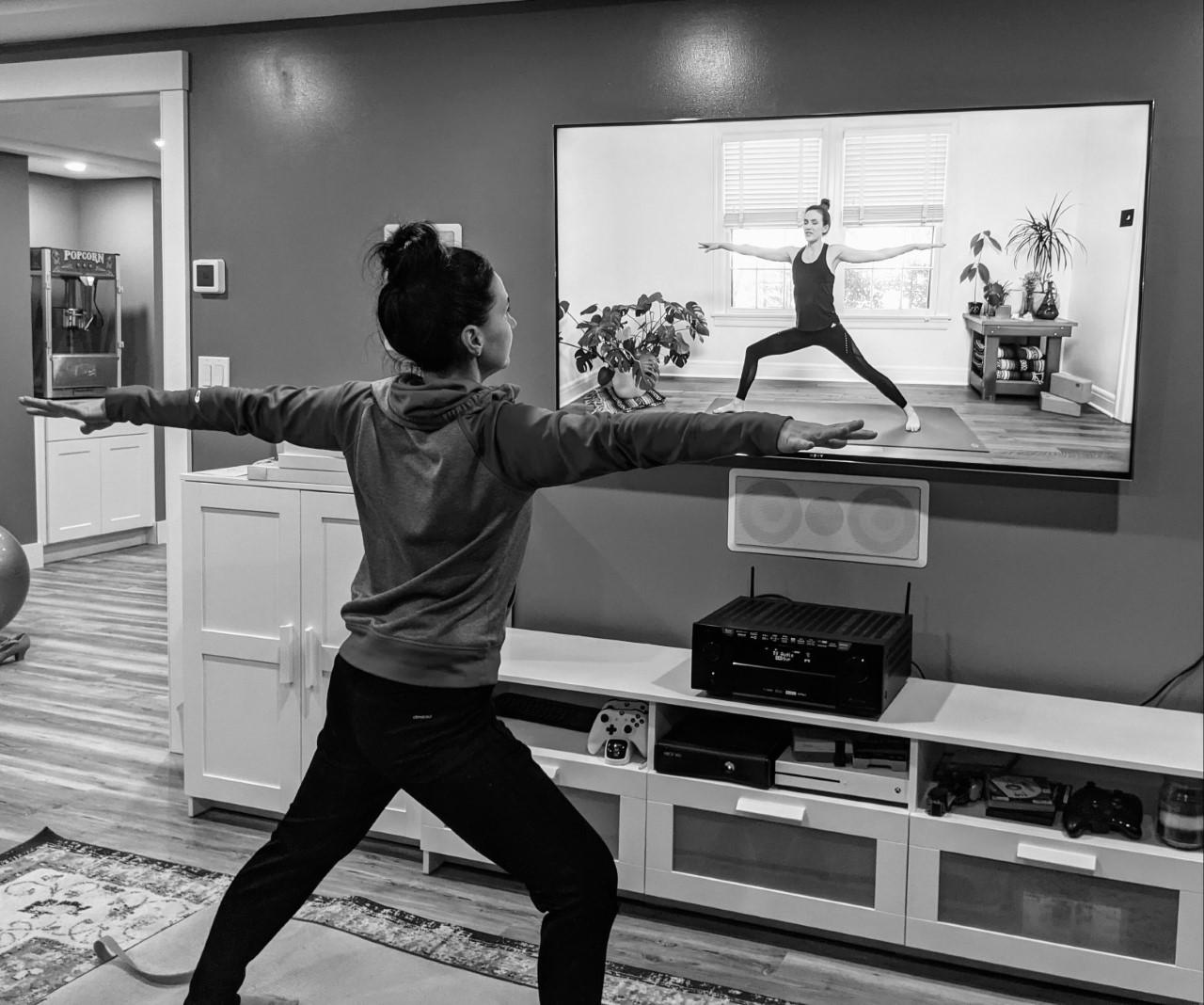
“I started to go for runs and do workouts at home just to get me out of my room and get my heart rate up,” she said. “The physical activity I started doing on my own helped me catch a break, honestly. If I didn’t take those forty-five minutes of some physical activity, I would feel overwhelmed.”
Not only is the act of sitting for long periods of time detrimental to your health, digital eye strain is an issue that is impacting many students and adults working from home.
“I’ve started to have these little eye twitches and stuff I can’t stop,” explained Patrick Moore (‘21). “My eyes are constantly strained.”
According to “5 Truths About Protecting Your Eyes” by Harvard Health, the idea that looking at screens for extended periods of time harms your eyes is a myth. However, it is important to take screen breaks through out the day, about every hour, to prevent the eye fatigue that Moore described. This can be difficult amid back-to-back class es, so make sure to maximize the free time you’re given if possible (such as lunch and FLEX) to take a quick screen break. While it’s true that exposure to high-intensity blue light can cause retinal damage, the light emit ted from your laptop is not categorized as such. So while eye fatigue due to excessive screen use can be irritating and sometimes even painful, be aware that no substantial damage is being done to your eyes.
“I’ve heard the blue light lenses are helping a lot,” Garfield said, referring to a popular kind of glasses that are specifically designed to filter out the blue light emitted from devices. “But I think that just taking a break from [screens] as best you can will really, really benefit you.” I, personally, have been using blue light glasses since the beginning of online learning in the spring of 2020, and I have found that they reduce my tension-induced headaches and eye strain significantly.
Another reason for this fatigue that people often blame on blue light is that computer users don’t blink as often when they’re looking at a screen, according to “What to do when more screen time leads to more eye strain” from Sanford Health
Therefore, it’s important to consciously blink while working on line, which can help fend off dry eyes and prevent discomfort during screen time. Something else to consider is the brightness of your screen, which can tire your eyes out quicker. Make sure that your brightness isn’t at a harsh level - some computers and smart devices offer settings that are designed to limit eye strain by dimming the light and adding a slight orange filter - and even though there is not
significant data supporting the use of blue light glasses, there’s no harm in giving them a try.
Alongside these physical effects of remote learning, it is important to address the mental and emotional impacts. “Some students thrive in online learning environments as they feel they can focus without classroom distractions and really hone in on what the teacher is relaying,” said Wolph. “Others feel isolated and benefit from the energy that they get from others within the classroom.”
Many students, especially those who are extroverted and thrive off of social interaction, find themselves grieving the loss of the social nature of in-person learning. “I used to love talking to people in school or in public but now I hope I don’t see someone I know when I’m at the gas station filling up my tank,” said Alcocer. “[Remote learning] has definitely been a struggle because I have lost most hope of being able to go back and finish up my senior year in the high school. The idea of not being able to go into school and see my friends at all is just heartbreaking.”
Hannah Cunningham, a School Psychologist at ORHS, agreed with Wolph and Alcocer, saying, “stress and anxiety are becom ing more prevalent during this difficult time. The pandemic and working from home can induce more stressors. People may find it harder to stay connected to their community, adapt to schedule changes, and find ways to stay active, all of which can negatively impact mental health and resiliency.”
Cunningham also emphasized self-care as a way to battle these mental and emotional troubles, saying: “Self-care is import ant to focus on throughout the day because it fights off burn-out. If we focus on little ways to take care of ourselves in day-to-day life, we are less likely to hit a wall and feel completely spent. Selfcare also helps us stay motivated and focused when needed if we use our down time to take care of ourselves, which leads to less stress down the line.”
Students like Rachel Rowley (‘22) are finding their own selfcare strategies that help them get through the difficulties of online learning.
“I do a lot of skincare, mainly because at the start of my day and the end of my day, I get to take five minutes of my time to really focus on myself,” Rowley explained. “I think [self care] is a short moment that’s really important in your day, whatever you’re doing, to take some time to focus on yourself.” Rowley also stressed the importance of participating in self-care that is screen free. In a time when our whole worlds as students are online, it’s especially important to choose activities that are simultaneously relaxing, fulfilling, and unplugged.
“Apart from [skincare], I love to read,” Rowley said. “I feel that reading is a healthy way to kind of take myself away from reality and into a different world. I love to take small walks… anything I can do to get away from the screen is a really great way for me to self reflect and take a break for my mental health.”
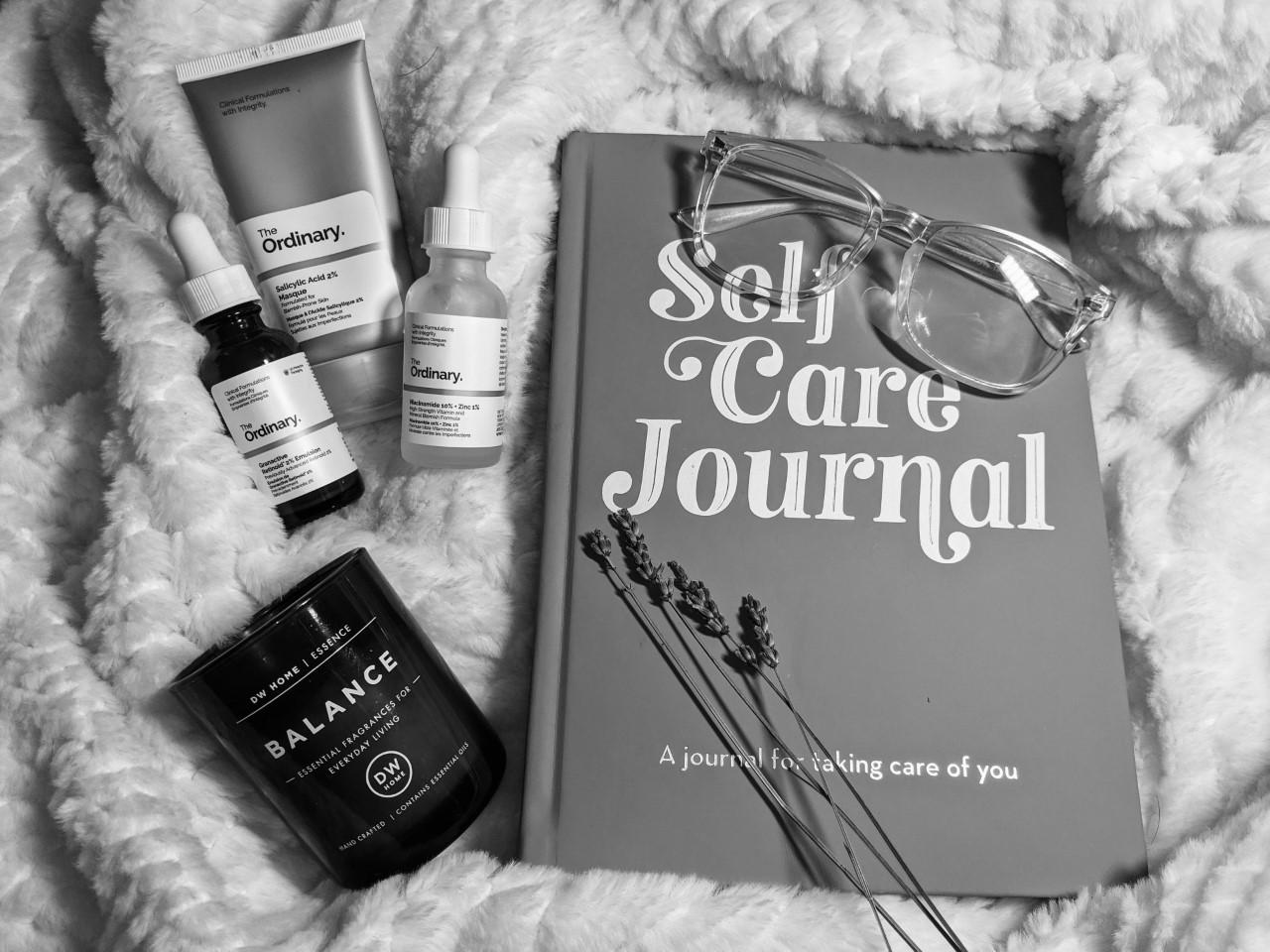
There’s a plethora of self-care activities that students and adults alike can participate in, whether it is skincare, exercising, journal ing, or reading. Pretty much anything goes. However, there are a few important questions to ask yourself when choosing a self-care activity, to make sure you’re doing something that will really help you.
First: is it off screens? The best way to fight tired eyes is to take small breaks from screens throughout the day, no matter what
your activity of choice is.

Second: is it something I enjoy? Please don’t force yourself to read or draw if that’s something that does not bring you joy… one of the primary goals of self-care is to boost your mood.
Third: will this calm me? Perhaps choosing an intense board game or even a complicated coloring page can make you anxious. If not, great. But if you think it will add to your anxiety load, try and choose something else.
Finally, check in with yourself. Do you just need a brief activity to lift your spirits or is there something more intensive you need to address your concerns, such as speaking to a trusted adult or seeking professional care? After all, we’re living through a pandemic and feelings of anxiety or even depression are known consequences of these psychological and physical changes. If you feel that your anxiety or feelings of sadness are interfering with your daily life, it is important to seek out resources that can help you work through these emotions and find targeted solutions.
“I want to encourage those who are feeling isolated or strug gling to let either your parent or a faculty member know,” said Wolph. “This pandemic made us shift quickly to a different style of learning, without the luxury of advanced warning, and with that comes many different reactions or responses.” Whether adults can simply provide a listening ear or help to connect you with a therapist or support group, their judgement-free involvement is an important step in healing from anxiety, depression, or other mental health concerns.
No matter what symptoms you’re feeling most strongly, know that there is a wealth of information out there to support you, whether it can be found through the counseling department or from reputable health websites. It is also important to remember that healthy habits are not something you perform only once. Real positive effects can only be seen through consistent repetition, so try adding something small into your daily routine now to improve your remote learning experience. For more information about mental health resources, check out Laura Slama’s article “Mental Health Q&A,” the “Counseling Corner” group on School ogy, or connect with your counselor, school nurse, or school psychologist.
If you or a loved one are feeling hopeless or at risk, please text HOME to 741-741 or call 911 for emergencies.
- Ella GianinoHomer Simpson. Ariana Grande. Sadie Hackenburg. Emily Hamilton. What do these very important people have in common? They are all donut lovers. And because Homer Simpson and Ariana Grande are probably too busy to dive deep into the donut scene of the New Hampshire Seacoast, we took it upon ourselves, as icons of the donut world, to find the best donut in the area.
Before we really get into it, if you’re a longtime MOR reader, the premise of this story may sound a bit familiar. Back in 2017, MOR published “Zach and Spencer’s Pizza Adventure” written by Zach Leichtman and Spencer Clark. This story caught our eye, somewhat because of the questionable ranking (Pizza Hut as number one? Really?) and inspired us to provide the Oyster River community with a ranking of our favorite food: donuts.
Over the span of a month, we visited twelve different places known for their donuts within a thirty minute drive from Durham. At each place, we chose the donut(s) that first caught our eye and that we felt would represent the shop’s best work.
We even curated our own ranking system, which consisted of six categories. Each rating was calculated using the following criteria: taste, affordability, visual appeal, creativity, quality, and the variety of options that the shop provided. All categories were weighted equally out of five points, and we took the average of each score to give each donut’s final rating out of five stars. Please refer to the very scientific spreadsheet to see the amount of data and math that went into our reporting. Before we dive into the six different categories, keep in mind that our version of how good a donut is is entirely subjective and someone else may see a donut very different than us.
The taste category was arguably the most subjective, and we found we even disagreed with each other at points. The most im portant factors we kept in mind when judging taste included donut texture (was it more like bread or cake?), sweetness, the frosting to donut ratio, level of excess oil or grease, how well the combination of flavors worked, and whether or not the frosting overpowered the

donut and vice versa.


We decided that affordability would be how “worth it” the donut was for the price, not just the price itself. If a donut was of lower quality but cheaper, like around a dollar, it might be worth it, but if we were getting the same quality for almost two dollars, would it still be worth it? Visual appeal was purely aesthetics and our own personal opinion on how good it looked. Creativity was mostly in regards to flavors: have we seen it before? Was it common? Quality, we decided, was a combination of how fresh the donut was and if it seemed like it was made with love, which was very important. We took into account the variety of options because they could have the best donuts on the block, but what if you don’t like glazed?
We started our journey a mile from ORHS: hungry, naive, and having no idea the toll this article would take on our bodies. Our expectations were low, as the Mill Plaza Hannaford isn’t exactly known for its donuts, but our spirits were high. Hannaford produced a decent donut, but lost quite a bit of points in the creativity and quality cate gories. The donut was dry, tasted as if it had been sitting around for a while, and reminded us of a mediocre bread with some glaze. That being said, the holiday sprinkle topping was certainly a favorite for us and satisfied our initial donut craving. This was the only place where we each indulged on our own donut, and following this trip, it was safe to say the two of us would be splitting one donut moving forward. With a Dunkin’ Donuts right down the road, we would probably pass on the Hannaford donut and go to a place where donuts are truly the priority.
Our second stop was a classic, a place that any self-respect ing New Englander would be familiar with: Dunkin’ Donuts. We knew this was an important stop on our donut journey, as it would set a baseline for all the other donuts due to its reputation and popularity. We got there later in the afternoon so the selec tion had been reduced, but we didn’t hold that against them. We instead looked at what they would have had at a reasonable time of the day, like we did with many of the other spots. We ended up picking a donut with chocolate frosting and tiny snowflake sprin kles that added a bit of festive flair that we appreciated, although overall the presentation wasn’t above and beyond, due to the fact that it looked a bit messy and like minimal effort was put in. However, to be fair, it was also one of the cheapest we tried, so for
the price of 99 cents, the quality and taste was fair. The experience was mediocre as a whole, the donut was what you would expect and would satisfy a craving, but it was definitely nothing to write home about because it was lacking in creativity as well as visual appeal.
After undergoing some major renovations with the addition of a new cafe and market last year, we were excited to see what Emery Farm had to offer in the donut department. Similar to Hannaford, donuts were obviously not their priority, and our only option was their classic apple cider donut. Our first impression was that the donut was messy. No points were deducted for messiness, but be warned that you will be finding cinnamon sugar in your car for weeks afterward. The donut would be considered classic by any definition. You could tell they were made fresh as no two looked the same. It had a very cakey inside, and was covered in enough cinnamon sugar to feed an army (or two very hungry teenage girls). Overall, this donut was exactly what one would expect from a rustic farm stand like Emery Farm. This donut was ranked on the lower side, mostly because its good taste and quality ranking couldn’t make up for the lack of variety and creativity.

Wicked Mini Donut - 3.6
Wicked Mini Donut was a curveball. Neither of us had been there before and we were not sure what to expect. As we drove into Portsmouth we looked up the menu and had to discuss it at length. There was a ton of variety and the choices they had were very creative. You could get anything from a rice crispy donut to a bacon donut, and that’s ex actly what we did. The idea of the shop was that, true to its name, the donuts were super small, so we went for the three donuts for three dollars deal. It seemed only fair that with such a large variety we tried a few flavors because some flavors might be better than others. We actually ended

up asking the cashier what her favorite was, assuming that that would be a good place to start. Hers was the rice crispy donut, and we followed that up with Emily’s favorite, the maple donut. Last but not least, we knew we needed to try the bacon donut. They were some of the prettiest ones we ended up trying, with cute little garnishes and carefully dripped frosting. However, we were sur prised that the taste didn’t live up to our expectations. It seemed that in their mission to create these wacky, fun, small treats, they lost some of the donut experience on the way. When biting into a donut you want it to be soft and decadent, that was not the case here. They were on the dry side and most of the flavor came from the various garnishes, such as bacon and had little to do with the donut itself, which was bland overall. They were also pricey com pared to the other places, although many of the other donuts were priced around one dollar as well, because these were so small you were paying more for the appearance and the novelty.
We say this with absolutely no hesitation: Market Basket did what Wicked Mini Donut couldn’t. Were we surprised? Yes. Was this one of the best donuts we have ever had? Also yes. The options were limited, which was where Market Basket lost the most points, but we happily agreed on a Boston Cream donut. While the lack of options was disappointing, we would have rated taste 100/5 if we could. This donut was heavy, overflowing with rich, creamy filling. The donut itself was light and airy, and the chocolate frosting was the perfect level of sweet, without being too overwhelming. For only 79 cents, this donut was not only tasty, but extremely affordable. After our mediocre donut experience at the previous grocery store, we can say our expectations were greatly exceeded at the Lee Market Basket.
On our second stop, on our second day, you might think that we would be filled to the brim with the cakey treats, and boy was that true, but we had a mission to complete and we were not giving up now. We knew that Coffee Craving was a pivotal point for us. Coffee Craving makes their donuts to order, so we knew we were in for a treat as soon as we pulled up, and the anticipation only grew after we placed our order for one piping hot cinnamon
sugar donut and waited while it was made up for us. We were not let down. The five minute wait was well worth it. We got the donut piping hot, covered in cinnamon sugar that made us forget all about Emery Farm. Their selection was minimal with only a few choices. They had the cinnamon sugar one we had but included on the menu was also a powdered donut that looked delectable. However, their quality made up for the smaller array. It had a great rustic look that matched its great taste that is well worth the price; the only thing we could knock it for was creativity, but in this case I think it can be forgiven because of how well this classic was executed.


After our immense success at Market Basket and Coffee Crav ing, we were off to Stonehouse Bakery in Barrington. Especially following the rich Boston Cream donut from Market Basket, we were in need of something lighter. Stonehouse Bakery had a wide variety of options, and we decided on a gingerbread donut without any glaze, frosting, or sprinkles. It had a great ginger flavor and was not nearly as sweet as some of the other treats we had. It was on the lower side in the visual appeal category due to the lack of fun or colorful decorations, but we would definitely go back to Stonehouse (probably not for some time though. We unfortunately won’t be eating donuts for a while after writing this article). Overall, it was exactly what we needed after our back to back donut days, as our bodies filled with more and more frosting and sprinkles. It wasn’t overly sweet or heavy, and was the perfect end to a very successful day of donut tasting.
Now we are obviously ranking donuts here, however, when curating our list for all the places we wanted to go, we stumbled across a gem. Right in our own town of Durham, Sweetened Memories makes cookies in the shape of donuts. While we realize that, in actuality, a hole in the center of a cookie, along with some creative frosting work doesn’t make it a donut, it was too fun not to include. It was very pretty with light pink frosting and small pearlescent sprinkles. The store had no other donuts, so unfor tunately we had to give them a very low variety score. In terms of taste, it was a very high quality sugar cookie with some sweet frosting that had a nice balance and only grew on you the more you ate. However, because it didn’t taste like a donut we figured we would settle somewhere in the middle and give it a three out of five on taste. It was high quality and creative, but it was one of the more expensive treats we tried and that, combined with the lack of choices, made it lower on our list even after the visual appeal was taken into account.
For our next day of donuting, we were off to Harvey’s Bakery in downtown Dover. We decided on a maple donut and were immediately blown away by the quality, and knew Harvey’s was not messing around with anything frozen or pre packaged. As for taste, the donut was not too cakey, but very light, airy, and soft. The frosting was very sweet, but not too overwhelming with artificial maple flavoring. It was comparable to fresh maple syrup, not any old jug of Aunt Jemima you could get at the grocery store. However, we did long for some sort of sweet filling on the inside, and were instead only met with more donut. It was disappointing
to say the least, but this was a solid donut that tasted great, looked appetizing, and was, without a doubt, made with love.


Duston’s actually wasn’t on our original list; we found it in a last ditch effort to find more donuts after a difficult search through Dover’s cafes and bakeries to make sure we had found everywhere in the surrounding towns that had donuts. On our last stop, Duston’s turned our trip from a total loss to a successful outing. The bakery section had a few classic options, so we went with a donut that had a thick chocolate glaze. There were bubbles on the top of the frosting that made it look less appealing, but the taste brought it home. The chocolate frosting was probably the best we tried; it definitely had a strong flavor that can sometimes be lacking in a low quality frosting, but this seemed like it was made with care. The donut itself was pretty solid, but the frosting was definitely the star of the show. This very affordable donut, at $1.25, kind of came out of nowhere, but it ended up making it pretty far up our list.
Based on the name alone, we had high expectations walking into Donut Love in Exeter. They had many creative options, and we decided on a sea salt chocolate donut, something we hadn’t seen at any other place. This donut came in at a whopping $3.25. Sure, it was a decent sized donut that was clearly made fresh that morning, but the taste did not live up to some of the other donuts we have previously tried. The donut itself was very cakey, but had a good chocolate flavor and a sweet glaze. It was nothing over the
Toast Crunch cereal on top. Angry Donut had a large variety of options: everything from a donut with Fruity Pebbles on top, to an Almond Joy inspired treat. Before we even bit into the donut, we knew Angry Donut would be a front-runner, based on creativity, variety in options, and visual appeal. We were even happier when the taste lived up to the standards we had set for it based on looks alone. While waking up early wasn’t fun, we were glad we arrived right when Angry Donut opened at 7am, as we could tell the treats were baked fresh that morning. Both donuts were fluffy like pancakes and were soft and airy. We thought the Cinnamon Toast Crunch donut was a bit too much sugar for such an early morn ing, but the jelly donut was exactly what we needed. Neither of us are huge jelly donut fans; this was the first one we had throughout this whole experience, but we were blown away. The jelly inside was fruity and sweet, but tasted like real jelly, not overly sugary with artificial flavors. The sweet glaze on top paired perfectly with the tart jam and was all tied together perfectly within the fluffy donut itself. While this donut fell just short of Coffee Craving for the grand title, we were more than happy to end our donut jour ney on such a high note.
top, but the donut tasted fresh and the quality was high. The salt on top threw us off a bit and, because we weren’t blown away by the donut itself, could not call this odd combination a favorite of ours. It was certainly creative, but after scoring a 3 for taste, and even lower in the affordability category, this donut resided in the middle of the pack.
Our drive to Angry Donut was emotional for us. After our highs and lows across the local donut world, we were sad, one may even say angry, to see our journey come to a close. Given it was our last stop, and that all the donuts sounded exquisite, we ended up getting two: a raspberry jelly donut, as well as one of their specials of the week, a maple frosted donut with Cinnamon
It is safe to say, without hesitation, that we have scouted the best donuts in the area and we hope that our research like ours aids future donut endeavors. Going into this article, we weren’t sure how many donut places were actually in the area and could only name a handful. After a little bit of research, a lot of driv ing, and $21.07 spent across all donuts, we were unexpectedly impressed by the local donut scene. While we are confident in our calculation on the best and worst donuts in the area, it’s import ant to remember our reviews are entirely subjective. Who knows, maybe you would like salt on your donut or wouldn’t be as big a fan of overflowing Boston Cream donuts. With that being said, we would recommend any place on this list and would encourage anyone reading this to check out and support these (mostly) local businesses. We had so much fun writing this article and while we may be horribly sick, it was all worth it in the name of science and donut supremacy.
 -Emily Hamilton and Sadie Hackenburg
-Emily Hamilton and Sadie Hackenburg
Recently I was given the advice that I should forgive someone who hurt me and people I care about for the sake of my own well being. I was told that all of the anger and resentment wasn’t going to help, and that forgiving this person would actually benefit me.
I’ve never been one to hold a grudge, but I felt as though this person didn’t deserve my forgiveness. Why should I forgive them? The problem with this way of thinking is that I thought forgiveness was about relieving the person who hurt me of their guilt. Come to find out, it’s the exact opposite. Despite its many challenges, forgiveness is a skill we need to learn in order to truly rid ourselves of the emotional baggage we’re left with when people break our trust.
The definition of forgiveness may seem obvious, but I think one of the reasons I, and so many other people, have a hard time with forgiving someone is because we think forgiveness is some thing it’s not. Forgiveness is about relieving yourself of the nega tive emotions that someone has caused you to feel, and not about making them feel better when they’ve made a mistake. Oftentimes when someone apologizes to us, we respond with, “it’s okay,” regardless of the sincerity of our response. This is what causes the confusion when it comes to forgiveness. Instead of responding with “it’s okay,” reply with, “I accept your apology.” When you forgive someone by saying, “I accept your apology,” you are not telling them that what they did was okay or that you are fine with what happened.
According to the article “Why Should We Forgive?” by Psy chology Today, “Learning to forgive helps us to control our story and our feelings to avoid unnecessary pain.” The article discuss es the findings of Dr. Frederic Luskin, Director of the Stanford University Forgiveness Project and author of Forgive
for Good, who discovered that the benefits of forgiveness include reducing anger, hurt, depression and stress, increasing feelings of optimism, hope, compassion, physical vitality, self–efficacy, conflict resolution skills, and confidence.
“Ultimately, forgiveness is more for yourself, and it’s not for the other person,” said ORHS Counselor Kim Cassamas. “I think a common misconception around forgiveness, and I think this is probably what holds a lot of people back from going through the motions of forgiving someone, is that it’s not a reconciliation. Forgiveness does not mean you’re going to go back to the way things were before. Forgiveness is more for you to let go of the resentment and anger of whatever transpired but it does not mean that you’re going to head back and have the same relationship.”
Having the same relationship is something I worry about. I don’t want my forgiveness to be seen as an open invitation to come back into my life. However I don’t want to close the door on this relationship. After her parents’ divorce, ORHS English teach er Shauna Horsley’s path to forgiveness meant figuring out what was most important to her. “Moving on and having a relationship was really important to me in this situation,” said Horsley. “There are certain people in your life where you still want them there and you have to be able to make that decision- is my ability to move past this going to provide us an opportunity to continue to have a relationship that will be fulfilling for me? You have to be able to make that decision and I think that’s really hard to navigate.”
Horsley’s parents divorced when she was nineteen which cre ated a rift in her relationship with her father. “I took it personally. I think a lot of kids and young adults do when their parents are going through stuff like this. They may not articulate it directly or
even make sense of it in their minds but they feel like part of why this is happening has to do with that person not caring about you. They’re making a decision that harms you because they don’t care about how their actions affect you. As an adult looking back on that mindset, I realize now that people make poor decisions without intent of hurting other people.”
That is what I needed to hear. “People make poor decisions without intent of hurting other people.” While I realize that this is not true for every situation, the majority of times it is when we deal with forgiving someone. Going through being hurt by some one you care about teaches you so much about yourself and about
skill in it but there’s more of that self exploration.”
During my time of self exploration, I’ve realized that before I can forgive someone, I need to be able to process the situation. I need to understand how I feel, how the situation has impacted me, and what I want my relationship with the person to look like. Processing the emotional harm that someone has caused you is not easy. It looks different depending on the individual who was wronged, the people involved, and the action itself. Each situation requires a different amount of time and attention to process be fore one can reach forgiveness. Cassamas brought up an example of how to deal with a situation that may take longer to process.

how harmful negative emotions can be on everyday life. Having experienced this herself, Horsley recognized the consequences of avoiding forgiveness.
“The first thing I learned about myself is that when I hold on to stuff like this, it creates a huge amount of stress and anxiety for me that isn’t necessary,” said Horsley. “It’s almost like I’m punishing myself for something that I had no control over which does not solve a problem and it only makes my life harder.”
Part of reaching forgiveness, that I never thought about before talking with Cassamas, is self-awareness. I view forgiveness as a skill, one which we must all learn in order to properly recover from traumatic experiences. Cassamas explained how this skill is developed. “Part of it is self worth,” said Cassamas. “I think con fidence plays a big role in one’s ability to forgive. That skill comes from knowing yourself and knowing how to process through whatever life is throwing your way,” said Cassamas. “Yes there’s
“With forgiveness, sometimes you have to process a loss if you’re not going to have that reconciliation. It’s not always easy to not move forward with someone who is important in your life and you have to process and figure out what life is like without that person,” said Cassamas. “You can provide forgiveness and not dwell on the situation anymore and let it impact you moving forward, but there’s still a loss and work that needs to be done to move forward.”
Moving forward is the goal of forgiveness. I don’t want to be stuck in this cycle of negative emotions. I want to move on without emotional baggage or guilt. In addition to the emotional benefits of forgiveness, an article titled “The healing power of forgiveness” published in IDEA Fitness Journal showed study results indicating that “people who are forgiving tend to have not only less stress but also better relationships, fewer general health problems and lower incidences of the most serious illnesses--in cluding depression, heart disease, stroke and cancer.”
Horsley talked about the importance of forgiveness, speaking from her personal experience. “I definitely think it’s important to forgive people because I think it makes your life better ultimately,” said Horsley. “I try to look at it as me not cutting them slack as much as giving myself permission to move on with my life and be happy.”
When asked what forgiveness meant for her, Horsely respond ed, “for me it meant that I had a relationship with my dad. He got to meet his grandkids and I got to spend time with him. I have a lot of great memories from those opportunities. Had I not forgiven, that wouldn’t have happened.” I know it hurts. And I know that sometimes people do things that you think you can never forgive. But please try to open yourself up to forgiveness because by doing so, you are opening yourself up to a happier and healthier version of yourself.
- Isabella Crocco
“Ultimately,
is
yourself, and it’s not for the other person.”
I’m really into plants. My collection of almost 50 plants started with a Monstera deliciosa (a pretty common house plant that has beautiful leaves with an arrangement of holes, or leaf fenestra tions) that I got before school resumed in August. I wanted to add a little life into the room I would be doing my online classes in. About 4 months later, I can definitely say there’s a lot of life in my room.
While potting plants indoors may have been practiced for thousands of years, an article from La Résidence by Léon & Geor geit, titled, “A Brief History Of Houseplants,” states it wasn’t until the 17th century that house plants were used more for aesthetics. Later, during the Victorian era, plants were used to bring life into homes during the winter.
House plants have been gain ing popularity in the United States since the 1970’s Indoor gardening and potted plants can be traced back to early Greece, Rome, and Egypt. The use of plants in homes has grown greatly over the past 200 years, and now collections are growing faster than ever due to everyone being at home. Not only has collecting plants become quite addicting, but they have improved my mood, stress levels, and productivity, so it’s easy to see why people have gravi tated towards them while home quarantining during the pandem ic. There is a plant out there for everyone, and so many great local businesses where you can find them. Even if it’s one, five, or fifty, I think everyone should have plants at home.
On an Instagram poll, I collected data from 78 of my followers. 45% of people have grown their plant collection since the start of this year. In another question, 60 said house plants improve their move and/or motivate them, which is roughly 80% of the people I polled.
While I thought I was one of the only students at Oyster River who developed a plant addiction this year, it turns out I’m not alone. Ellie Koener (‘22), has also been growing her plant col lection since the start of 2020, now owning 20-30 plants. Once I started, I was like “Oh, my room would look better with just like one more plant, and I just kept getting more.”
Koener explained why she decided to introduce more plants into her house. “I feel like just being stuck in your house or apart ment and not being able to go outside as much, it’s good to bring the outside in. It just brings life into my house,” said Koener.
Even though it’s a lot of work, Koener enjoys the result of her hard work. I feel like [plants] definitely improve my mood,” said Koener. “When I wake up, just seeing the plants makes me happy.”
A study titled “Interaction with indoor plants may reduce psychological and physiological stress,” from the Journal of Physiological Anthropology, proves that boost in mood Koener is referring to. While just looking at plants can help reduce univer sal stress, touching, smelling, and repotting plants reduces even more. These actions stimulate the autonomic nervous system, and have a posi tive effect on stress. Touching foliage or dirt reduces sympa thetic activity, which increases when people are stressed. In other words, it works against the nervous system to stop stress from occurring. I agree that repotting a plant and getting your hands dirty reduces my stress. These simple tasks that come with taking care of plants block out stress, and offer a break from my day.

“It’s proven that they just give you peace and calm,” Andrea von Oeyen, the strings orchestra teacher at both ORHS and ORMS, agreed. “What they release into the air we need, and what we release into the air they need. It’s just a really needed symbiotic relationship.” A symbiotic relationship is exactly how I describe it. Giving your plants a little water every week is a small price for the calm energy they bring into your home.
It’s easy to see how people have become attached to house plants. Not only do plants create positive spaces, but they defi nitely have a large effect on my mood and stress. Waking up, I immediately have a task to start my day with. Whether it’s simply opening the shades or diligently watering each plant, having to take care of another organism ultimately will make you feel better about myself. Plus, there’s nothing better than being able to look at all the colors and textures of your plants everyday.

Cindy Mauchi, who has been operating a small succulent and

terrarium business called Love Green Terrariums for five years now, finds joy in growing and succulents. She uses glass containers, succulents, stones, and other materials to create terrariums for decor in homes and work spaces. Mauchi explained more and more people started purchas ing her terrariums for their offices, as they found them calming to have on their desk.
Due to recent circumstances, people have been left with more time at home. As a result, Mauchi has seen a change in the sales of one of her products. “When I started the business, I started do-it-yourself kits but they were not that popular. During the pandemic, I’ve been selling a lot more of those, and I guess people have more time to build them at home.” These “do-it-yourself kits” allow people to build their own terrarium from scratch with plants and materials provided by Mauchi.
Another person who’s seen a change in the popularity of house plants is von Oeyen, who has been growing her collection of around 45 plants more rapidly this year.
For von Oeyen, she’s definitely seen a shift in Wentworth Greenhouses collection of plants. “Since I started going there I’ve definitely seen more [variety of houseplants]. The people there are so wonderful too. I think it’s probably all them. It’s probably all ingenuity and them talking to each other, and “we should bring this in”. Von Oeyen has been shopping at Wentworth Greenhouse for the past nine years, and has first hand been able to see them grow their collection of house plants.
Switching back from the shopper to the supplier, Informa tion about Mauchi’s succulent and terrari um business and all of the current products can be found her web site, igterrariums.com. Mauchi’s business will also appear in the New Hampshire Homes Magazine in January. If you’re feeling over whelmed with getting your first plant, succu lents are a great place to start, and Mauchi offers a large variety to choose from.
“I am obsessed with succulents,” explained Mauchi, as she talked about her history with plants. She continued on to say, “when we moved to New Hampshire, I had more space so I started getting succulents and propagating them. It got to a point where I started making terrariums that I brought to friends and to the office, and then I started getting orders and that’s how the business started.” Not only are succulents fascinating to look at, but they are proba bly some of the most easy care plants.

Now that you know about the benefits of having plants, it’s time to go pick some out. Remember to be mindful about where
you are getting your plants. Family owned greenhouses and local growers are great because you know where your plant is coming from and that it’s not going to die once you bring it home. Big box stores like Home Depot and Lowe’s may have a decent selection, but it can often be a struggle to bring these plants into your home. They don’t do as well with their plants and aren’t known for taking great care of them while in store. I shop for the majority of my plants and Wentworth Greenhouses and Woodbury Florist & Greenhouses.
“When I moved to Rollinsford and discovered Wentworth Greenhouse, it was just a very calming presence to be in the greenhouse, and I decided that I really wanted to have that in my own home,” said von Oeyen. I too enjoy shopping at Wentworth Greenhouse for my plants, as they have a great selection and the people are very kind and helpful.

There are also other ways to purchase plants at an even more local level. There are plenty of social media platforms where local people sell and trade plants. This is a great option because these plants are already established and should transfer into your home smoothly. Koener often purchases her plants off Etsy, another great option. While I buy plants online in the summer, I would refrain from doing so in the winter, as plants don’t travel or grow well in cold climates.
When the weather does get warmer, I would encourage everyone to add a plant to their home. A plant gives you responsibility. It’s your job to water it and make sure it’s growing. These tasks help to add small breaks whenever we need to get away from our busy lives and just let us escape. Even between my online classes or when I’m anxious about due dates, I take 15 minutes to check up on my plants and make sure everything is healthy. I can walk away after and feel renewed and ready to get back to my work.
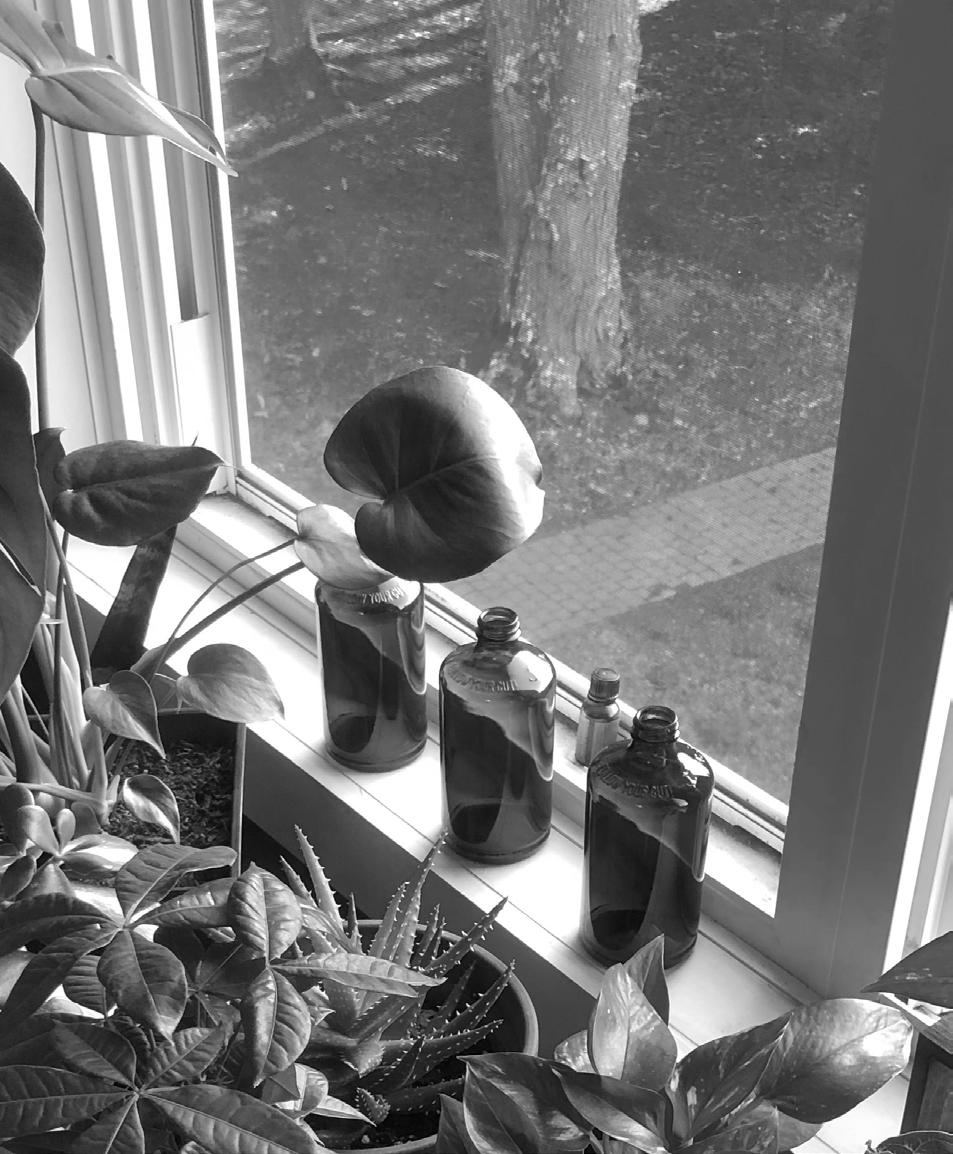
The detective paces around the crime scene, her heels clack ing on the paving stones of 1917 New York. It had been weeks since the disappearance of a young girl, and her agency had finally followed their most promising lead here, to a small bicycle repair shop. Suddenly, one of her men shouts from the basement. They’ve found something! But what is it? The detective descends the steps to examine the cause of the commotion, only to be greet ed with a shocking discovery, something that will dramatically alter the future of her investigation…
“Ella! Dinner!” Crap. I grimace and close my book, but not before slipping in a sticky note to mark my page. Later, I’d come back with a hot cup of tea and a cozy blanket, ready to finally solve the mystery.
Beyond simply being an enjoyable way to pass time, reading has been scientifically proven to have several psycho logical and emotional benefits. Especially as boredom runs rampant during the long days of quarantining, reading is an excellent hobby for anyone to try. There isn’t anything quite like becoming engrossed in a book, as avid readers know, and this activity isn’t just for the academically inclined. Re gardless of where your current comfort lies with paperbacks and hardcovers, here’s why reading should be at the top of your next leisure time to-do list.
Some students choose reading as a method of escapism from the mundane, such as Juno Ball (‘23). “I get really immersed in the worlds,” Ball said. “I really like reading, especially fiction, because when I read, it seems so vivid. In first grade, I remember one time I got so lost in a book that I didn’t hear my teacher telling me it was time for lunch!” Ball’s experience is common among other book connoisseurs: when you begin to turn pages, you truly allow yourself to explore realities that leave you wishing you lived there too, or discover incredible true stories you had never heard of before.
Another student who is acquainted with the immersive quality of books, Zoe Smith (‘21) recalled a quote by Game of Thrones author George R.R. Martin. “A reader lives a thousand lives before he dies. The man who never reads lives only one.”
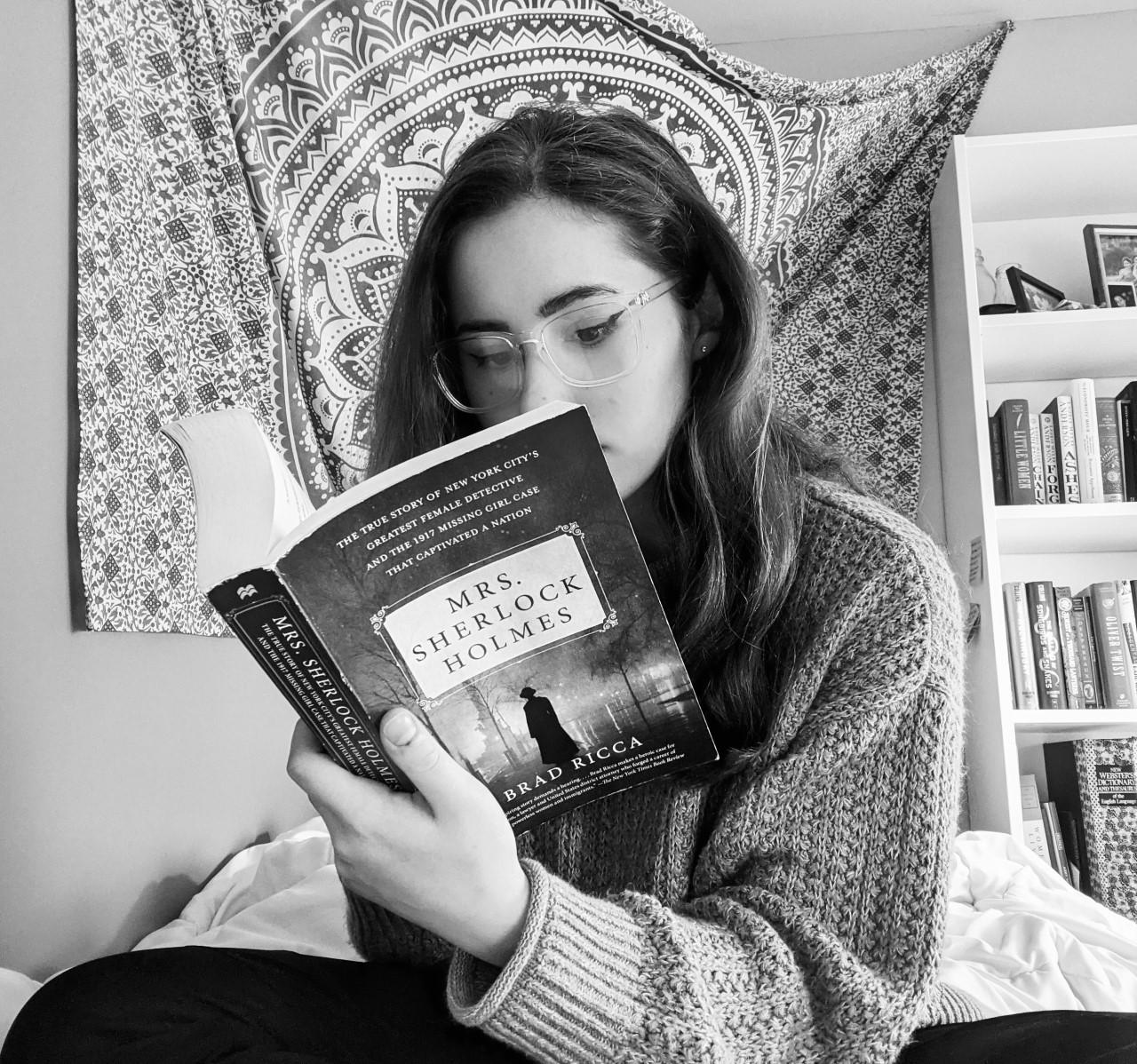
“I think that’s so cool,” Smith gushed, “because you do get invested in the stories and you do feel like you’re part of them.”
ORHS English teacher Shauna Horsley elaborated on this, saying: “I love to read because it allows me to delve into the lives and experiences of characters whose struggles are different from my own… when I’m immersed in a book, it’s like being in a flow state.” It’s true that reading a particularly engaging story can make the world around you disappear and time fly by; while you’re seemingly sedentary in a chair or your bed with a book in your lap, your imagination is really soaring through other worlds and characters and storylines, soaking it all up.
Alongside this personal testimony, there is a wealth of scientific evidence behind the benefits of reading. As stated in “Reading can Help Reduce Stress, According to University of Sussex Research” from The Argo, a 2009 study by the Uni versity of Sussex, found that reading was the best activity for alleviating stress. This conclusion was determined by tracking heart rate and muscle tension over time. On average, it took only six minutes of reading for participants to ex perience a significant decrease in stress symptoms. Personally, I enjoy keeping a book by my bed to work through, bit by bit, every night before I go to sleep. Not only is it nice to be absorbed into a story and for get about the stress of the day, reading is a more sleep-conducive activity than scrolling through Instagram or TikTok. According to “Blue Light has a Dark Side” from Harvard Health, the blue light emitted by our phones, laptops, and tablets can seriously mess with our brain’s production of melatonin, a chemical necessary for sleep. But whatever the scientific evidence behind reading before bed may be, I definitely find myself drifting off faster when I’m reading than when I’m binging Netflix.
When asked if reading has helped with her anxiety, Ball re sponded “definitely.”
“I’ve been going back and reading books that I’ve already read and previously really enjoyed, which I think is partially a comfort thing. In this weird time, it’s nice to have that familiarity.”
Horsley agreed with Ball. “Books allow me to escape and relate;
“A reader lives a thousand lives before he dies. The man who never reads lives only one.”
both of these can be freeing emotionally. When I’m reading more, it helps me put my own experiences and struggles in context.”
This isn’t merely an astute observation, it is one backed by further scientific evidence. According to “Novel Finding: Reading Literary Fiction Improves Empathy” from Scientific American, a 2013 study by social psychologist Emanuele Castano explored the empathetic differences in subjects exposed to fiction literature. Compared to those who were given nonfiction materials, the sub jects who were given literary fiction performed significantly better on a test designed to measure their ability to understand others’ feelings. David Kidd, a PhD candidate also involved in this study, explained that this result can be attributed to literary fiction’s use of characters.
“Often those characters’ minds are depicted vaguely, without many details, and we’re forced to fill in the gaps to understand over these big ideas,” Kidd said to Scientific American. Not only can these “gaps” allow us to understand others better, but ourselves as well. It’s refreshing to see characters in books that reflect you as a person, and to watch them go through hardships, victories, and maybe even fantastic adventures. A major appeal of reading, especially fiction, is its emotional, empathy-driven nature, as well as the moral themes that are woven into almost every story.
“To Kill a Mockingbird is one of my favorite stories because it teaches you the moral values of loving everyone and not judging another person,” said Smith. Reading is an excellent way to work through important themes and questions, which Horsley also emphasized.
“Right now I’m re-reading The Alchemist with my freshmen classes, and it’s been wonderful to think about life’s big questions,” she said. “What is happiness or success? What are the benefits to pursuing your passions? How do we navigate life’s many obsta cles? Without that book, I don’t think I’d be mulling over these big ideas.”
Despite all of these benefits, the unfortunate reality is that some people, especially students, seem to be averse to the idea of reading.
“I think there’s definitely a stigma around books and how read ing is boring, especially with bigger books,” said Trevor Savage (‘21). “But I think it’s important for anyone to kind of find their niche level of book… especially now because the amount of time we’re spending on our screens is ludicrously high, and that’s how
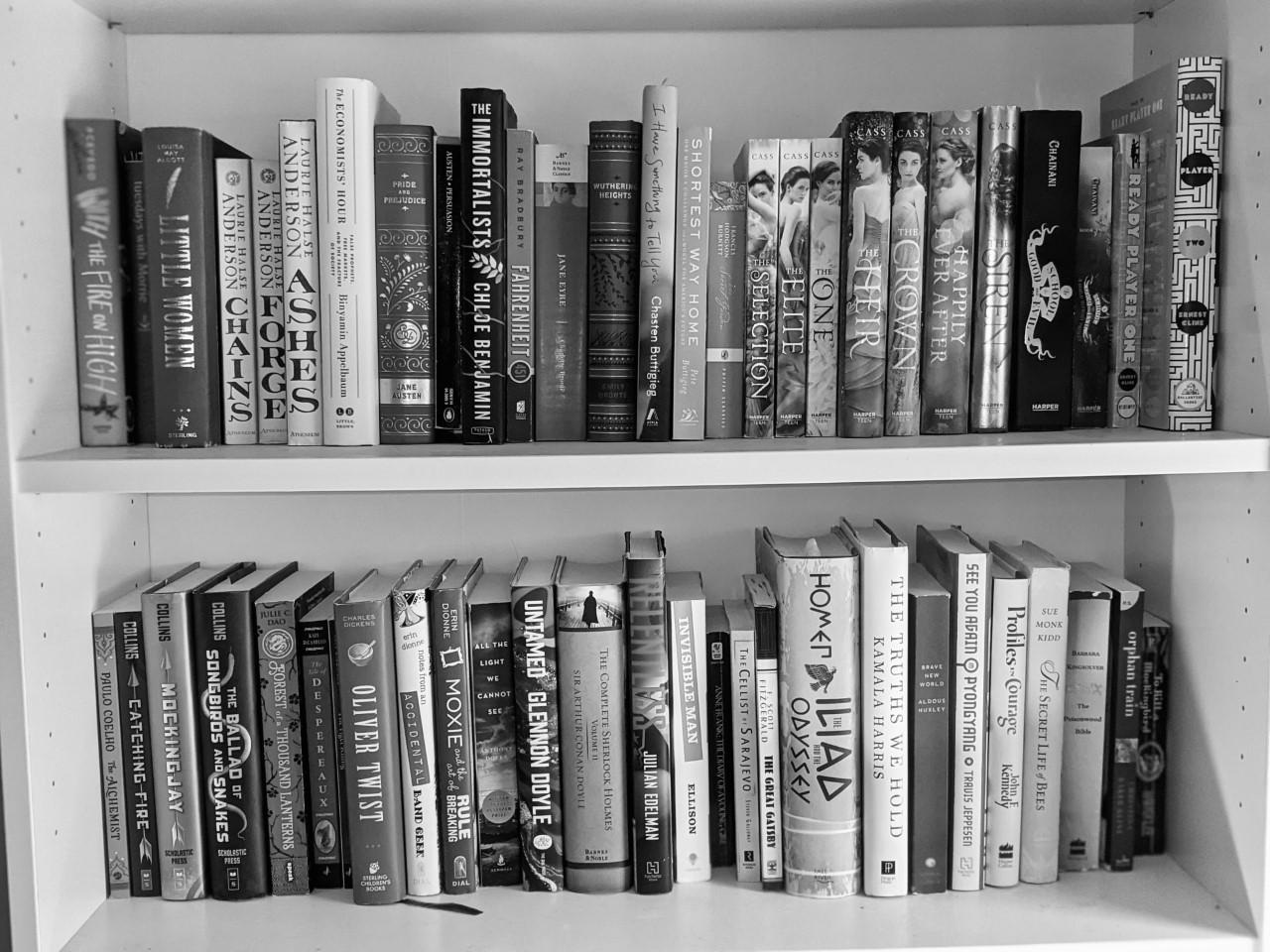
most of my other relaxation mechanisms are, so I think reading’s extra important to step away from those screens.”
For many people, it’s difficult to sit down and focus on the task of reading for hours on end, especially in the age of constant mental stimulation. There are no apps to click into or widgets to move around, only tiny text that seems to blur together as you find yourself disengaging. But the truth is, you don’t need to read for extended periods of time each day to reap benefits.
According to “The Magic of 15 Minutes: Reading Practice and Reading Growth” by Renaissance Learning, a 2016 study found that fifteen minutes of reading a day was the “magic number” for creating positive cognitive development. The students in the study that read for half an hour daily performed better still. Not only this, but as the age of the students increased, so did their margin of improvement. This may go against a preconceived notion that reading development is most dramatic in young children, but the 17-year-old participants in the study improved their reading scores by 30 points by reading almost every day, compared to an 18 point difference with nine-year-olds.
Even if reading for fifteen minutes a day sounds like torture, the real trick is to find a book you love, maybe a nonfiction on a topic that fascinates you or a novel with a rollercoaster of a plot. For many students, their only association with reading is through dreary, school-assigned volumes. If that sounds like you, I implore you to do a little digging. There are so many different stories out in the world covering millions of topics, and there’s bound to be some that pique the interest of even the pickiest readers.

Reading isn’t a ball-and-chain process, either: if you don’t like what you’re reading for fun, you’re not obligated to finish it… this isn’t classwork! And reading has never been so accessible: some people opt to make use of their local libraries, like Smith, and some try out thrifted books, like Ball and Horsley. And while nothing can replace the feeling of holding a book in your hands, the internet presents a prolific selection of stories and is a fantastic resource for finding your next read. But regardless of where you look and what you find, I think you’ll be surprised at the ways in which reading can change your life for the better.
Check out our very own staff book recommendations on the next page to find some inspiration!
- Ella GianinoELLA GIANINO: Mrs. Sherlock Holmes, by Brad Ricca
“Mrs. Sherlock Holmes follows the incredible true story of Grace Humis ton, New York City’s greatest detective that you’ve never heard of, and her most iconic crime-solving escapades in the early twentieth cntury. A must-read for lovers of mystery, history, and true crime.”


LAURA SLAMA: The Darkest Minds, by Alexandra Bracken
“This novel is a really cool and original idea, I highly recommend it to anyone who likes fantasy/fiction.”
ALDEN SWIESZ: Relentless, by Tim Grover
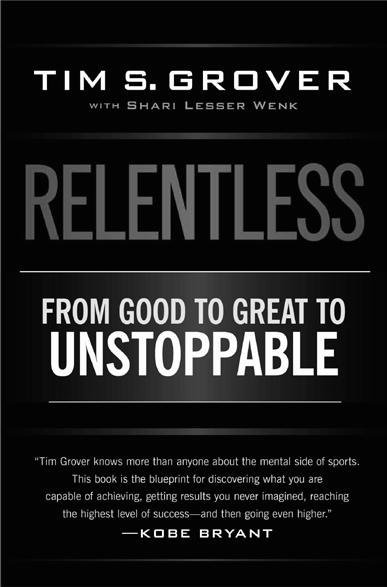
“Relentless is a book that goes in depth about how the most successful people in the world are able to accomplish so much, and how anyone has the ability to accomplish anything they dream of.”
MADLA WALSH: Little Fires Every where, by Celeste Ng
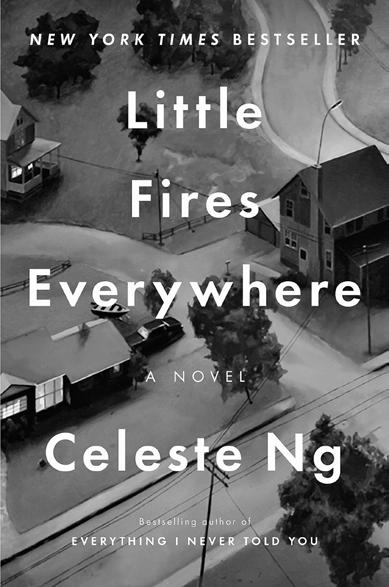

“I would recommend this book be cause it has a really good plot which always keeps you on edge and excited. It also has deep characters which you can empathize with and connect to. I personally love realistically set books like this one and thriller/suspenseful books which is why I liked this read so much.”
HOLLY REID: The Help, by Kathryn Stockett
“I’d recommend The Help because it is a compelling story about racism in the south in the 1960s. I loved this book because the plot was great and it was overall just an inspiring and fun read.”

MEGAN DEANE: The New Jim Crow, by Michelle Alexander
“It’s one of the best books for un derstanding racism to date. It’s very intriguing, and everyone should give it a shot, regardless of their political beliefs.”
ARI ANTONELLI: A Clockwork Orange, by Anthony Burgess
“This was a book unlike any other that I’ve read because you learn a language of a different world, and it’s interesting to read about this group of criminals and how they live.”

ETHAN WILSON: The Boys in the Boat, by Daniel James Brown
“I really like the history of our coun try through the lens of an Olym pic athlete. I think it makes for a unique perspective, and a more light hearted story. The Boys in the Boat follows a student through his college experience and rowing journey. His team ends up going to the Olympics in Nazi Germany.”

LIAM ASHBURNER: Jonathan Livington Seagull

“This book is about the life of a seagull, but more importantly it’s about following your heart and making your own rules. I recom mend this book to anyone looking to find a place where their passion can prosper.”
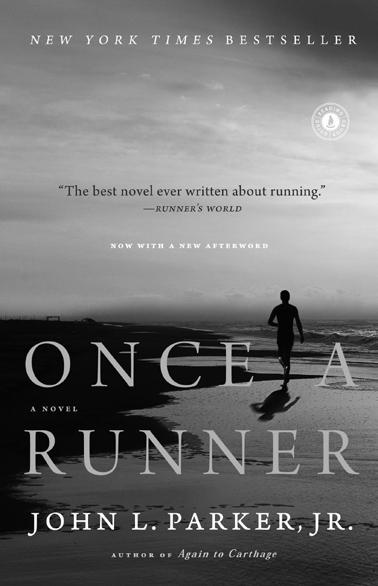
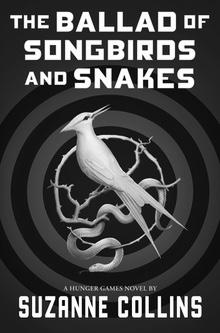
OWEN FLEISCHER: Once A Run ner, by John L. Parker, Jr.
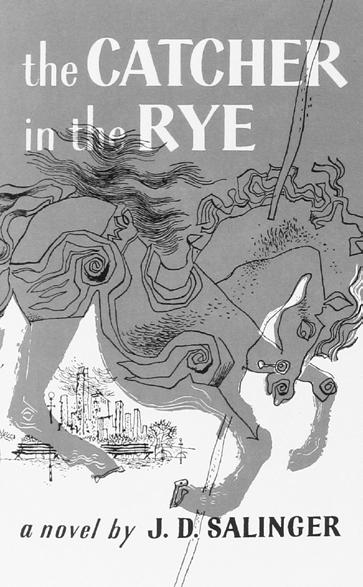
“Once a Runner is the one and only book that you need to run if you run for sport, training or pleasure. It explores the purity of internal and external competition. It’ll assure any reader that the greatest thing to do is to lace up the shoes and put in the miles.”
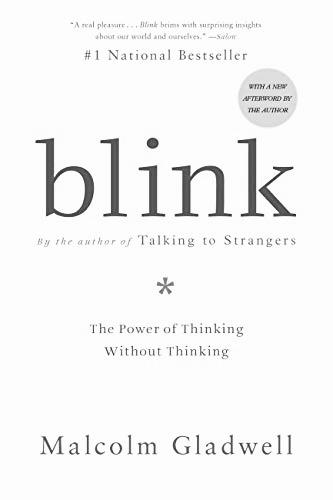
“For anyone who really enjoyed the Hunger Games series, this book takes a totally different perspective without taking away from the orig inal plot at all. This was, by far, my favorite quarantine read.”
SADIE HACKENBURG: The Catcher in the Rye, by J.D. Salinger
“This book has been deemed a classic and it’s a great one to start with, as it has interesting tone and style as well as an interesting main character. It’s a great book if you’re looking for something on the shorter side that has great cultural significance.”
“I’m someone who will not read books unless I have to for school but I chose to read this entire after my class was done reading a few chapters. This book not only enlightened me on how our minds work but also how business and market ing can outsmart the customers. I had a hard time putting this book down and as much as it was a beneficial read, it was also funny and interesting.”

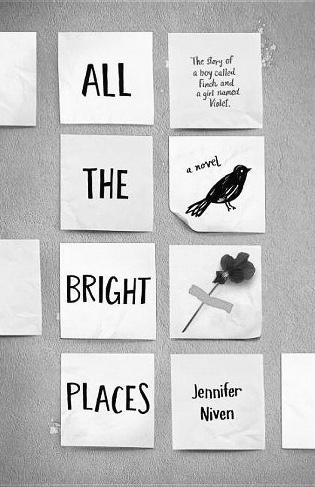
BHAVANA MUPPALA: All the Bright Places, by Jennifer Niven
“This book was recently made into a movie and honestly the movie doesn’t do it justice. The story follows this strange teen boy who is intrigued by this girl at his school. They are eventually partnered up for a school project and the book takes you along the process of creating their project. It’s such a beautifully written story with two super interesting characters!”
“This is the only book I’ve been able to read more than once and every time I do, I find I get something new out of it. LookingforAlaska is funny, clever, sad, powerful, and overall one of the most compelling books I have ever read. The characters are brilliantly written and the themes throughout touch on real and complex issues.”
Growing up, I was taught that there were only two genders and that each one had a stereotypical set of colors and clothing which correlated to my gender. As a girl, I was expected to love the color pink and wear cute frilly dresses, whereas my brother would like the color blue and wear tiny bow ties and button-ups. Our culture has firmly developed ideas of how boys and girls should and shouldn’t look, but with more people using fashion and beauty as a platform for self expression these gender norms have become confining.
The time to break out of these stereotypes has come. The gendering of fashion is an outdated way of looking at dressing, especially with more LGBTQ+ people coming out as nonbinary and trans. Fashion doesn’t fit into just two genders; it’s an over flowing and messy closet which allows people to choose garments from both sides to help them express their sexuality and gender however they want. It’s time for the idea of gendered clothing to be left behind.
As I grew up and discovered more about my personal prefer ences and how I wanted to express myself, I realized I didn’t fit into the stereotypical box I was supposed to. I much prefer blue to pink and I certainly don’t like dresses. Everyone has their own unique preferences. What I wear goes far beyond the simple but stereotypical ideas I was taught as a kid.
People’s definitions on what each gender should be wearing has been constantly but gradually changing throughout history. According to a Huffington Post article titled, “Women And Pants: A Timeline Of Fashion Liberation,” prior to the invention of pants in the 13th century, all men and women wore robes. This made

fashion the same for everyone, showing that even the roots of the fashion industry are genderless. As society has evolved, so have our fashion trends; while men started to wear pants, women, for the most part, stayed in dresses and skirts until the mid-19th cen tury. Today, pants are commonly worn by most people in Ameri ca, no longer is it taboo for women to wear trousers but instead it is normalized.
My point is that the evolution of pants shows the potential for all clothing to be seen as a gender non-conforming garments. I prefer wearing pants to dresses and skirts, and seeing the evo lution of them through history has made me more aware of the standards we hold men to when it comes to fashion. While wom en have normalized wearing pants and even suits, the idea of men straying from their traditional gender roles often sparks debates.
Oyster River High School student Riley Brown (‘21) uses fashion and makeup to express himself. Since coming out as gay, he has found himself dressing with more confidence and exper imenting more with fashion. “I feel so much more complete and confident when I’m fully dressed and made up. Expressing myself through things as little as a nice outfit or colorful makeup is all it takes,” said Brown. This confidence didn’t develop overnight for Brown. “It took a lot to start wearing out of the ordinary things to school, even things such as an Ariana Grande t-shirt, as it can seem too gay for a man to wear,” said Brown. With his growing confidence, his regard for what others thought about his fashion taste diminished, “I don’t know when, but at some point, I just stopped caring,” Brown said.
Similar to Brown, dressing in a way that makes me comfortable
has helped me a lot with my confidence. My freshman year, I focused a lot on what other people would think about what I wore instead of thinking about what I wanted to wear. I tried to follow the most popular trend with girls my age but it never made me feel confident. After I came out and stopped caring about meeting the gender norms of clothing, I was able to dress how I wanted. I started wearing clothes more traditionally associated with men and my confidence soared.
Brown’s choices, like mine, in how he wants to express him self should be his to make. There shouldn’t be a debate over if his clothes are “manly” enough but rather celebration over him embracing his confidence and dressing how he wants. “I think breaking fashion stereotypes is simply something scary for people with closed minds to comprehend,” said Brown. “I don’t under stand why somebody so unrelated to your life feels the need to have an opinion on the way you dress.”
The origin of this controversy can be traced back to the traditional gender roles pushed on kids. With men being more highly scru tinized for dressing how they want due to ideals that men need to be and look masculine. This mind set portrays to kids, specifically young boys, that they shouldn’t dress how they want if it deviates from how society expects them to dress. “Young children who want to express themselves through their clothing are pushing their desires down deep so that they aren’t judged,” said Brown.
One of the greatest influences on normalizing the genderless boundaries of fashion is media exposure. One of my inspira tions for this article was the controversy over the December issue of Vouge. The cover featured British singer Harry Styles wearing a dress. This prompted both celebration over Styles’ boldness to project what he wanted to wear to the world, and backlash over him wearing a traditionally feminine outfit. “Clothes are there to have fun with and experiment with and play with,” Styles said in his Vouge interview. This sparked my interest because I realized it was the only time I had ever seen a man in a dress being publi cized.
The criticism over Styles wearing a dress really struck me be cause of how passionately some people felt about the need to as sign gender to fashion. Yet, if all fashion were to be gendered, then there would be no place for people who don’t specifically identify with any gender. Oyster River High School student Juno Ball (‘23)

identifies as non-binary, meaning they don’t identify as male or female. Ball has had to work around the frustrating gender norms in fashion. “The fact that some clothes are considered ‘for girls’ makes me feel like if I wear it, people will take my identity less seriously. I really enjoy wearing skirts, but it’s the association with girls and femininity that steers me away from that kind of fashion sometimes,” said Ball. By considering all clothing as genderless, it would open the doors for people like Ball to not have to worry about being associated with a gender they don’t identify as. With more people, specifically in younger generations, coming out as non-binary, transgender, and other identities, the fashion scene has already begun to change. With more willingness to dis regard gender norms it provides people with more opportunity to change up their style. Despite not being in school this year, I have still noticed subtle moves towards genderless fashion within our community: boys wearing makeup and skirts, girls who go out in suit jackets, and people who seem happy to be able to dress how they want. “Communities of people who like fashion (especially the younger people) are definitely changing and there’s more of an emphasis on how fashion doesn’t have gender,” said Ball. “This is something I feel very strongly about and I’m excited to see other people pushing for [the] change in the way we think about clothing!”

Big brands in fashion have also started to adjust their clothes to fit more non-binary fashion styles. In July of 2020, Gucci launched Mx, their first non-binary collection of clothes, which according to the Gucci website, is meant to, “deconstruct preconceived bina ries.” Having more representation like this in the media allows for people to feel more comfortable with dressing how they want and being confident in their fashion preferences.
Fashion is a fluid industry designed to provide consumers with products that help them express themselves. By making fashion a non-gendered industry, it provides the ability for anyone to find clothing that makes them feel confident without discriminating against gender non-comforming people. It’s time to leave gender norms behind and embrace the fluidity of the society we live in.
- Madla WalshA look at how the ORHS Sustainability Club has gained traction and popularity despite the COVID-19 pandemic
While most activities have slowed down due to the COVID-19 pandemic, the ORHS Sustainability Club has done the opposite. This year, the club has created a greater social media presence, seen an increase in participation, and is continuing on with their initiatives surrounding compositing. They’ve taken steps to ensure they get their messaging out virtually. Through implementing news segments on ORTV, posting on Instagram frequently, and writing a monthly newsletter, they’re making sure to educate the community on sustainability in ways they never have before.
Sustainability Club was initially founded seven years ago by Jon Bromley, ORHS science teacher, along with support from Maggie Morrison, ORCSD Sustainability Coordinator, and others. Brom ley started the club because, “there is a need to alter our behaviors culturally around our consumption of resources, our pollution, and carbon emissions. Students recognized that, so the club is for students who want to take the next step and take action to actually make a positive impact.”
While the club has successfully made our community more sustainable in the past, and will continue to do that, one of the most noticeable differences in the club this year is the great increase in interest. Bromley explained that last year, the club had between six and twelve core members. This year, there are about 30 stu dents signed up. Bromley thinks this heightened participation comes from a number of factors, and said, “this year because of remote learning, the fact that students are engaging with the computer differently, and all weirdness of remote learning, all of a sudden kids are like ‘I want to do something. I want to be involved in something.’”
Another potential reason for this new participation is that they are focusing on their social media presence because “we’re trying to get the word out and get more people to acknowledge their own behavior and acknowledge the fact that they’re throwing away recycling in the landfill, or putting compost in the recycling
bins and contaminating anything that would be going to those facilities,” said Aidan Covell (‘21), who has been a member of the club since his junior year.

Some of their members have been focusing on making edu cational posts and following people from the school to do just what Covell mentioned. Due to the activity on their social media, their presence has become more known, and more people have seen their posts. You can check out their Instagram page, @orhs. susclub, to see their work.
While social media likely led to more student involvement, others joined because “what makes Sustainability Club incredibly unique is that this is a real world problem and it’s a real regional problem and it’s a real local problem. Students aren’t just helping Oyster River High School,” said Morrison.
Heather Clegg (‘22) has been a member since her sophomore year, and got involved due to a desire to be a part of that change.
“I decided to join because I wanted to spread awareness about the environment and help educate and advo cate for sustainability within our community and within our school.”
Other students joined the club for similar reasons. Covell joined because, “I’ve always been interested in composting and gardening and saving food and energy. I’ve always wanted more people to be involved and act like that. The group collaboration [is my favorite part] because we’ve been able to accomplish more things that way and I like the feeling of collaborating and sharing ideas with other people.”
This collaboration Covell mentioned has been key for the Sustainability Club this year. Another new part of this year is that they’ve split up into three teams: Instagram, ORTV, and the newsletter. While some members are focusing on building @ orhs.susclub, others are creating informational news segments with ORTV, the school’s televised news network, which play in
a video that the whole school views during weekly announcements.
Also new this year is a monthly newslet ter. The remaining members of the club have begun sharing a monthly newsletter to edu cate the community members on their work and to advocate for change in sustainability. The newsletters cover what the Sustainability Club is, share informational blurbs, and de tail their current projects. These newsletters are sent out to the community via email.
Social media presence isn’t the only thing that has led to a revamp of the Sustainability Club this year. In the past, mainly upper classmen were involved in the club. This meant they were focusing on more one-year projects because many of their members would graduate, and then they would have to pick a new topic the following year. Morri son explained that, for example, one year, the group did fundrais ing to raise awareness for the Powder Major forest conservation project. Another year, members wanted the club to go in a more politically active route, and attended climate walks and marches. The one year projects were valuable however, it is exciting that their work this year can be a continuation of their last year’s work, because they can further build upon what they started with the younger members. “Not only has [Sustainability Club] grown in the number of students, but we typically always had mostly seniors and some juniors, but this is the first year we’ve had a sweep of all classes which is really exciting,” shared Morrison. She continued on to say, “[the club’s goals] have become more tangible over time [...] Because we did a waste audit last year, we have something really concrete and measurable that we can work on. It can be a multi-year project as opposed to one-offs.”
As for their work this year, they’re focusing on composting. As Morrison mentioned, the Sustainability Club conducted a waste audit, which meant they collected waste over a two week period in the early spring of 2020. Their most telling finding was that there were approximately 7,000 pounds of organic waste being disposed of inappropriately. Bromley explained that most of that
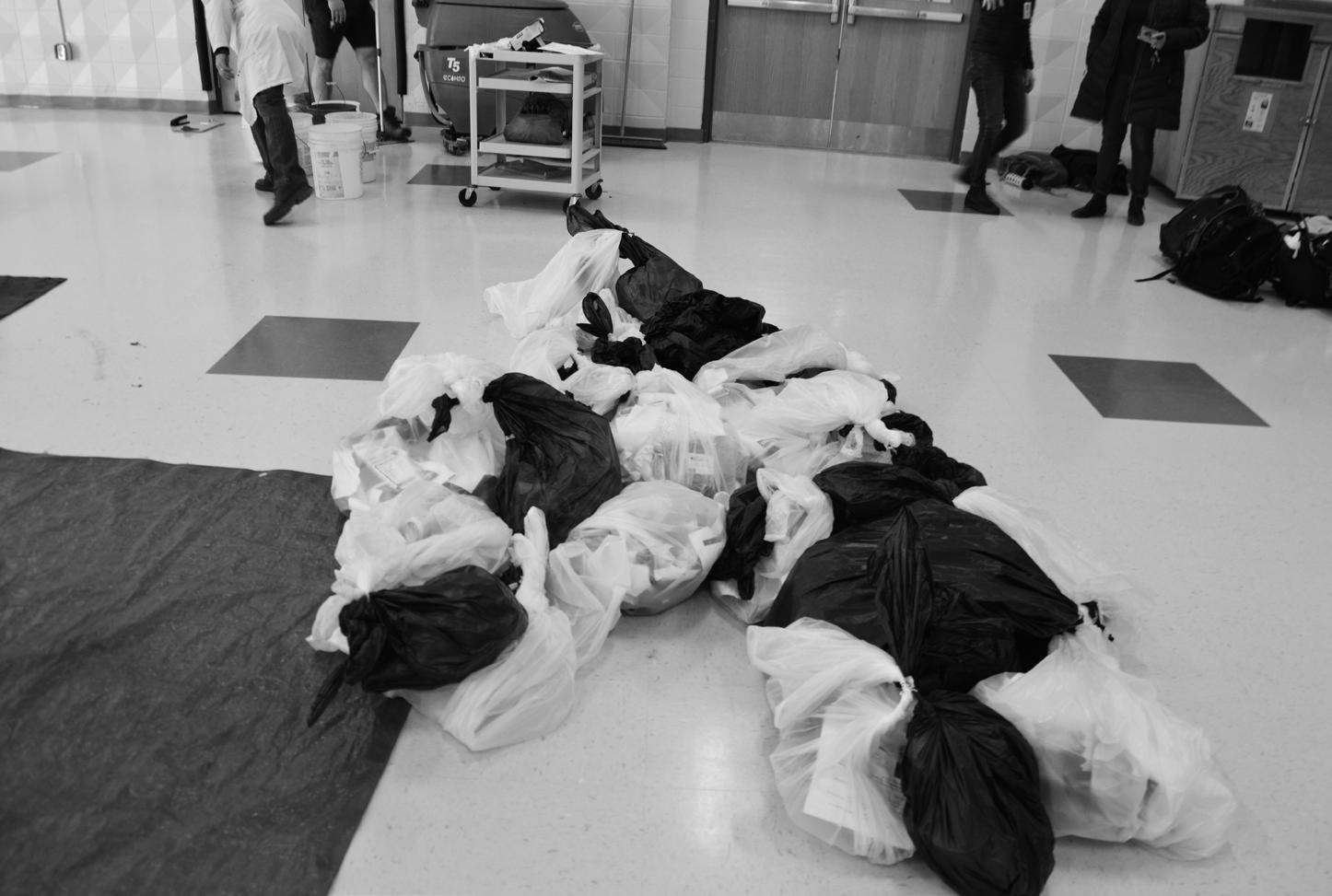
was coming from classrooms. Teachers and students are eating in the classroom and throwing food scraps away in the trash because there is no other place to put it. Currently, the only composting system the high school has is a composting bin in the cafeteria, which Sustainability Club implemented years prior.
Composting is essential because to put it simply, it reduces greenhouse gas emissions and food waste. On a more local level, it’s important because “Oyster River’s waste doesn’t go in a landfill, it goes to a waste energy plant in Massachusetts, which means that they incinerate our waste and turn it into electricity which is all good, but, you’re putting food waste into an incinerator and that food waste has a much better use and can be turned into compost. It just doesn’t make sense to burn it when it can be turned into compost,” shared Morrison. Clegg agreed with Morrison on the importance of eliminating this waste. “The first step in reducing compost waste is to raise awareness as to why composting is important and to educate on how to even compost. I think a lot of people don’t compost because they’re not educated on it, so I think us pushing all this information through our community members will really help them understand why it’s important,” said Clegg.

After this educational push through their various outlets, their future goal is to implement systems within the school such as composting bins in class rooms to eliminate this main source of waste.
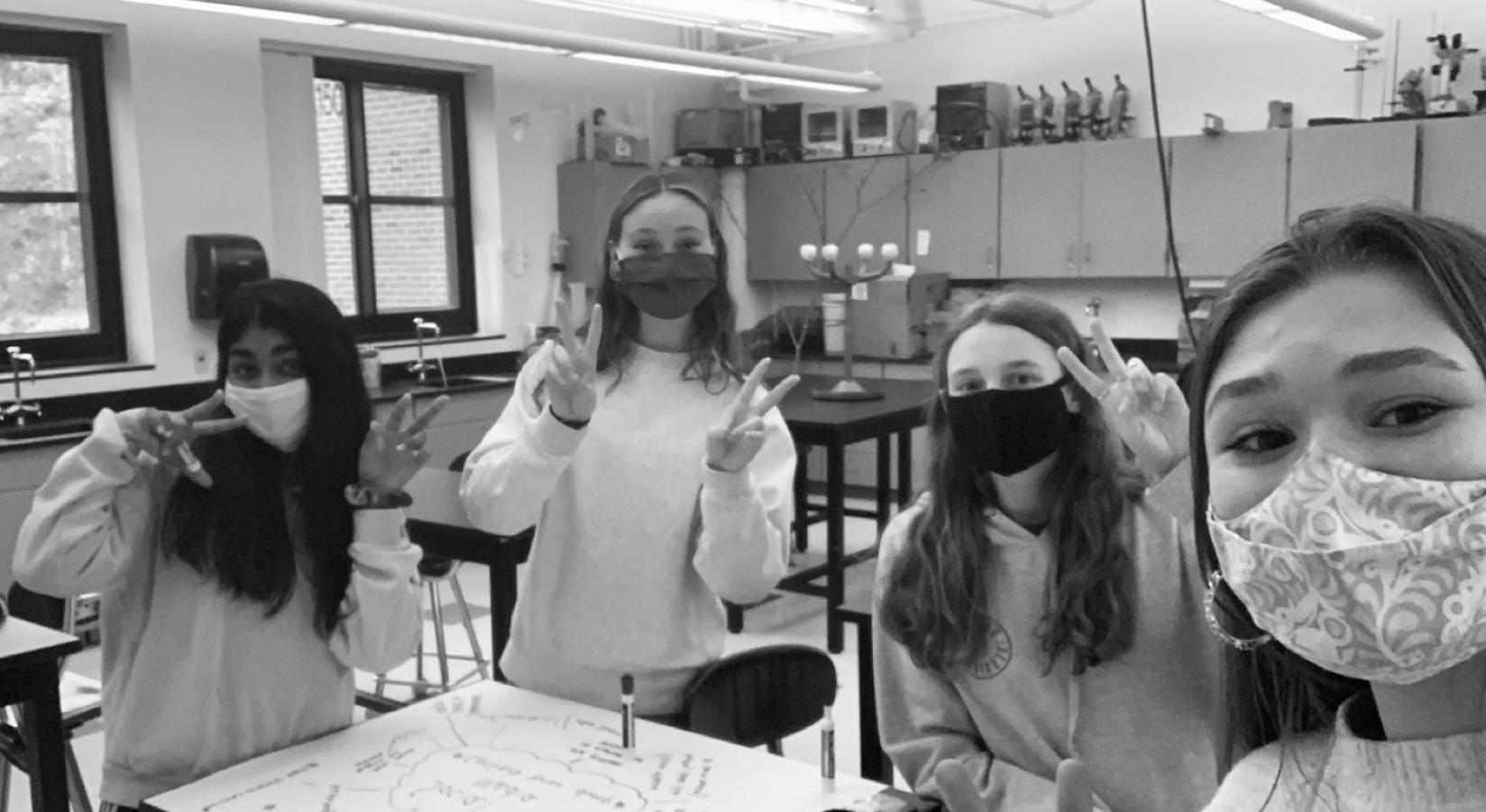
If you’re interested in getting involved with the Sustainability Club, you can reach out to Mr. Bromley. Covell encouraged others to join, and said, “obviously, there’s this big over arching issue of climate change, and people are always afraid of it or don’t want to admit that it’s a problem, and we don’t have much time. If we can work together to try to change people’s mindsets about stuff, even if it’s just the smallest things, that’s a very unique opportunity.”
-Holly ReidAccording to “TikTok Statistics” from WallroomMedia, the fairly new app TikTok, has about 840 million active users. Of these 840 million users, 32% of them happen to be between the ages of 10 and 19.
Clearly, TikTok has become a popular app among many people, especially teenagers. TikTok pres ents users the opportunity to create one minute videos of doing things like dancing, singing, or funny skits and become a well-known creator. TikTok creators at Oyster River make videos for fun, as they feel Tiktok is a place for them to express themselves through different types of content. For example, one person may make comedy skits and another may lip sync to songs. Along with this, there are people who view Tik Tok as a place of pure entertainment and tend to avoid creating their own content. Despite the entertainment and fame that TikTok can provide, there is a dark side to the app. Many creators deal with issues such as judgement, bullying and other forms of harassment.
Previously known as Musical. ly, TikTok was launched in 2016 but has become more popular in recent years. Evy Ashburner (‘22) stated, “I downloaded it in the summer of 2019… when it was just starting to become really popular.” TikTok allows users to make videos in whatever format they choose, using audio clips from movies, tv shows, or popular songs. Ashburner said, “I create lots of dance content because I am a dancer.”
Currently at 25.5k followers, Ashburner explained, “I kind of posted as a joke and all of a sudden one of my videos went viral and I did not expect it to. It’s crazy because you see it happening to other people…but you don’t think it could ever happen to you.”
While Ashburner leans towards creating dance content, Brenden Sheehan (‘22) enjoys making comedy videos. However, Sheehan’s initial reaction to his viral video was similar to Ashburner’s. He explained, “I posted a couple as a joke and one day I checked my phone and they had received way more attention than I thought they would.” Since then, Sheehan has accumulated over 1k followers.
As appealing it sounds to gain lots of followers on a popular app, it also presents the problem of bullying or judgement from others. Ashburner said, “during the election, I put ‘Biden 2020’ in my bio and all of a sudden there were people in my comments hating on me.” Along with political criticism, Ashburner explained that, “sometimes when I post dance videos, people will comment things like ‘oh she’s trying so hard.’” She continues, “I try to not let that stuff affect me though.”
Ashley Harvey (‘22) had a similar ex perience to Ashburner where she received a hate comment. She said, “one time a guy commented how I would look better without acne and that kind of hurt.”
As much as creators try to block out negativity, there is no doubt that hateful comments can create self-conscious teens. An article called “How Social Media Affects Teens’ Self Esteem” from SageDay, explains that many teens tend to develop a sense for who they should be through social media and if they are coming up short in the social media world, it can negatively impact their self image. The article also explains that negative or sarcastic comments can make teens rethink their self worth.
For these reasons, Maia Scopel (‘22) is purely a user of TikTok and not a creator. She said, “I think I just don’t post because I’m a little scared of judgement...I would just come up with things in my head about why someone didn’t ‘like’ it or if I looked bad or if I did something wrong and I would just overthink and make
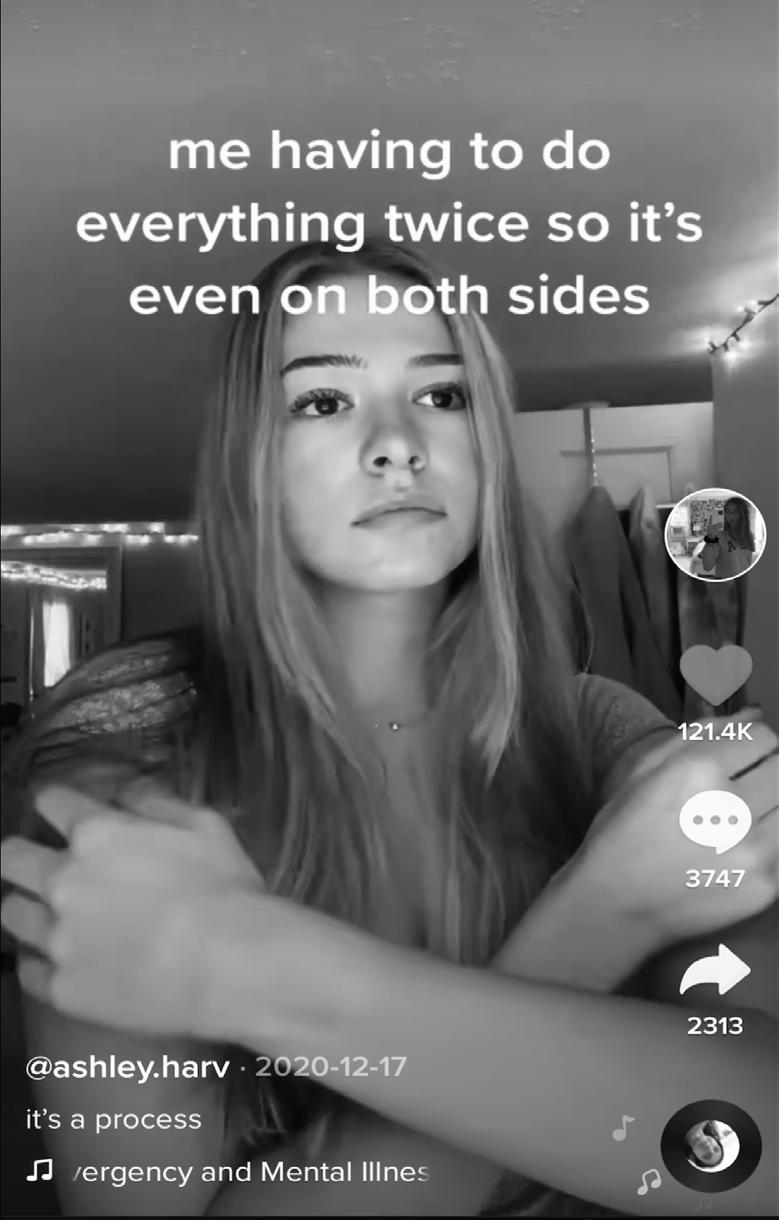
“It’s crazy because you see it happening to other people…but you don’t think it could ever happen to you.”
[creating content] not fun.” She continued explaining how there’s so much unnecessary hate thrown around on the app. “I see people that are so unproblematic and just do fun things and are so kind… and I never think they would ever get hate comments but they still do...people just find mean things to say.”
Although Sheehan has never received negative comments, he believes that it wouldn’t bother him that much. “I don’t really care what people think about me, so it wouldn’t really affect me.” He contin ued, “usually negative comments are made by people insecure about them selves. They post negative comments to feel better about themselves and I won’t give in to that.”
Aside from hate comments, many of the creators are worried they will be judged by their followers. Ashburn er said, “it sometimes feels so weird knowing that many people watch my TikToks.” She continued explaining how that leads to her feeling anxious. “Sometimes, I’ll post a TikTok but turn off the comments ahead of time because I feel like people will leave mean ones.”
Harvey agreed. “Lots of times, I’ll post a video and then take it down a couple minutes later because I was worried.”
However, the creators all agree there’s lots of great benefits to posting TikToks and having a large following. Sheehan said, “my favorite thing about TikTok is that I can post funny videos and possibly make someone laugh or smile.”
On the same page as Sheehan, Ashburner explained, “it’s so exciting to see positive comments.” She continued, “sometimes, I’ll see someone comment things like ‘oh I like your outfit,’ and little things like that make me really happy.”
Ashburner explained another cool thing about TikTok is how other famous people notice you. She says, “sometimes, I’ll post a TikTok of me dancing to a dance someone else created and then they will comment. It’s really crazy when they notice you.”

Harvey had a similar experience where a creator with 2.5 million followers commented on one of her TikToks. “It was so
shocking...I didn’t even believe it at first,” she stated.
As a viewer of TikTok, Scopel explained her favorite thing about the app. She said, “just seeing the connection people have to each other and reading the comments make me feel relatable and more connected to other teen agers around the world.”
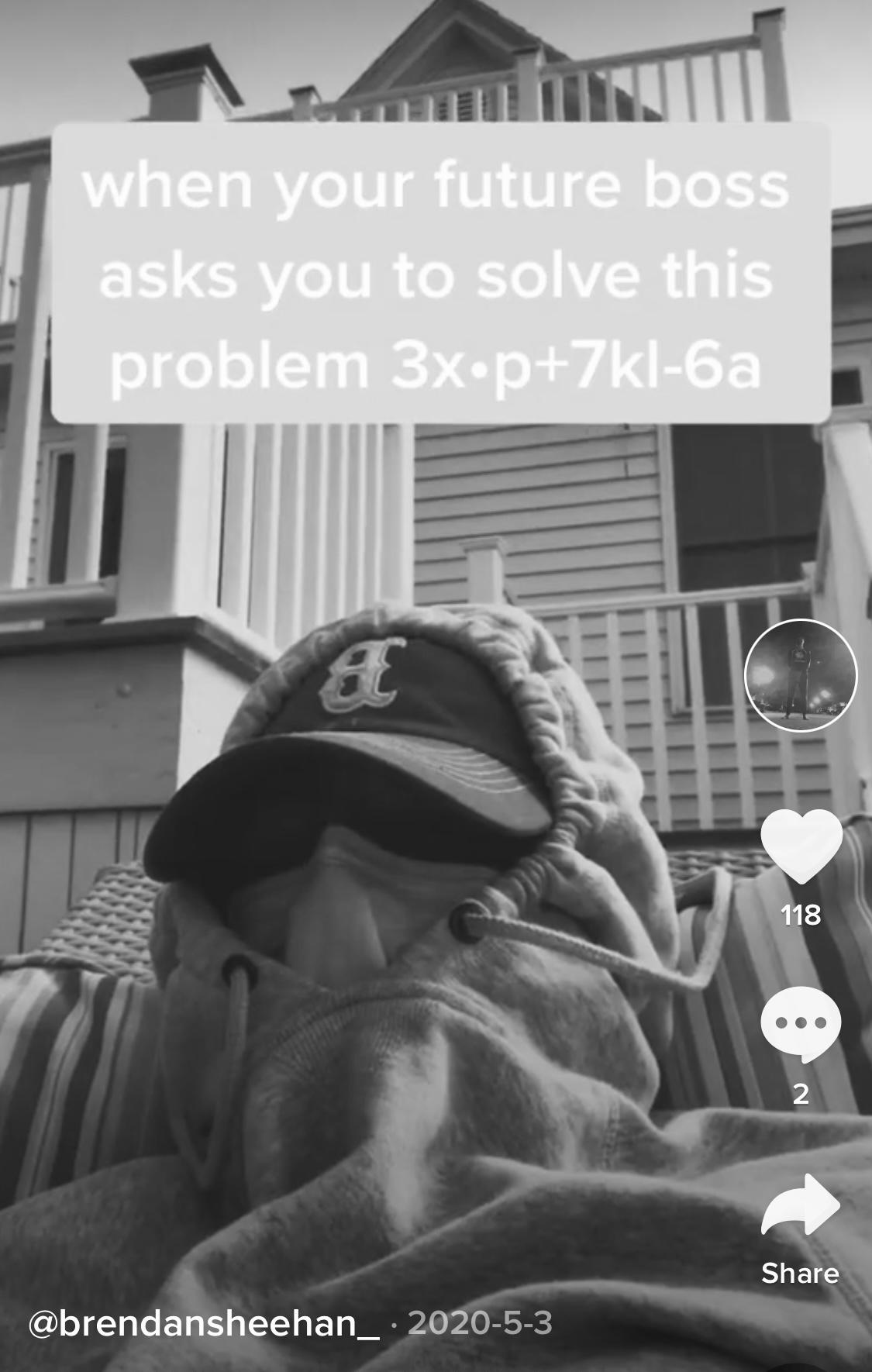
Along with small creators at our school, other big Tik Tokers explain the positive aspects of the app. With a following of 3.4 million followers, Haley Sharpe on a Vox interview said, “It’s ac tually so cool to know how many people enjoy the stuff I create...I feel like I am making an impact on some people’s lives.”
Social media influencer from Los Angeles, Sienna Gomez, gained a following of 12.2 million in just a couple months. She explained that she loves being viewed as a role model on TikTok after posting a body positivity video. In a Youtube video she said, “the amount of support I got after that [body positivity video] was crazy and I loved seeing all the people I could help with their own body image..it makes me so happy.”
TikTok clearly has both negatives and positives to it, but most creators seem to focus on the positive. For people who are thinking of joining the app, Har vey gave her advice. “I would just download the app, scroll through your feed, find a sound you like and make a video to it... TikTok is a really great place to express yourself and be creative...a lot of big creators were just doing what they love and look where they are now so maybe it could be you too.”
- Bhavana MuppalaThe COVID-19 protocols aren’t the only thing different for this year’s ORHS ski team and boys varsity basketball. Daryn Gladstone is the new ski team coach, and Lewis Atkins is the new boys varsity basketball coach.
Coaching in a new environment while keeping everyone safe during this time doesn’t make a job any easier. Both of the new head coaches displayed great skills and experience prior to being hired. Since then, the two coaches have continued to impress. “They were both very confident in what they do and their abilities…My first impressions of them were that they’re really good guys. They’re good people and they’re coaching for the right reason: they care about kids and want kids to develop, not just as athletes, but as human be ings,” said ORHS Athletic Director, Andy Lathrop.
Both of these new head coaches showed an impressive background in their sport and a strong fit for Oyster River athletes and stu dents.
Going into this season, all coaches are facing more challenges with COVID-19 restrictions than in previous years. Lathrop commented on how well both of the new coaches have dealt with this tough time. “We’re fortunate we’ve hired some really good people to come in. This is not an easy time to come in and take over a program with all of the stuff that’s going on and all these protocols…the coaches have really made some really great adjustments.”
After leading Portsmouth High School to a 27-9 record over his final two seasons, Lewis Atkins is ready to bring his impressive basketball and coaching career to Oyster River High School. Atkins played two seasons for Alabama A&M, a Division I basketball program in Huntsville, Alabama. After earning his degree in 2002, Atkins became an Assistant Coach for Alabama A&M until 2006. In 2005, Atkins led the team to the NCAA tournament where they lost in the first round to Oakland University.
Atkins then moved to Dover, New Hampshire. The future Bobcats coach received a job at Liberty Mutual in 2010 and became the Portsmouth Christian Academy (PCA) basket ball coach. He coached six strong seasons for PCA, bringing them to a championship for the first time since 2005, before going on to coach at Marshwood High School. From 20182020, Atkins was the assistant coach at Portsmouth High School. During his time at Portsmouth, the Clippers had a 27-9 record and were co-champions of the 2019-2020 season, due to COVID-19 ending the playoffs prematurely. Now, Atkins looks to bring Oyster River to a state championship.
Lathrop explained how they decided to hire Atkins as the new head coach. “We were obviously very disappointed when Lorne Lucas left. We totally understood. He teaches as Spaulding so it made sense for him to coach there too…We were very lucky that Lewis Atkins was interested. We got to know him through the interview process and we had kids, athletes, other coaches, an administrator, and parents on the interview committee and I think everyone was very impressed by his experience.” Lathrop continued to say, “I think what really was the thing that sold everyone on him was his demeanor. I think his demeanor fits Oyster River. He’s calm, cool, collected, doesn’t fly off the handle, but he has high expectations of his athletes and he conveys that to them.”
Players on the Bobcats are excited to have a coach with a new play style and a more modern game play. The previous boys basketball coach, Lorne Lucas, focused on a slower tempo offense and taking the easy points rather than shooting threes and making fastbreak scores. Bobcats captain, Doug MacGown (‘21) said, “my first impression of Atkins was how experienced he is. He played in college and had coached for programs like Portsmouth and Marshwood where he had a lot of success. . . I think we can for sure benefit from his style because he is much more open to three point shooting and fast paced offense, which fits our style really well.”
Robbie Follis (‘21), said, “I think coach Atkins knows the game very very well. He has already set guidelines for how he wants us to work hard, and win games, a great philosophy to have.”
After losing Coach Lucas, who led the Bobcats to lots of success, Lathrop feels very lucky to have another great coach. “I’m really pleased with how that has turned out. He’s doing a really great job and I think the kids really like playing for him,” said Lathrop.
Both the boys and Coach Atkins are feeling optimistic about their future. Atkins said, “I’m excited to be at Oyster River. They’ve got a huge history in boys hoops and I hope to continue to contribute to that.”

Daryn Gladstone, the new ski team coach, is excited for his first year at Oyster River High School. “This winter I’m expecting the team to come together and be supportive of each other as well as collectively as a group within our own team and the community. I hope that we have lots of fun while doing it. We will also be working towards accomplishing individual season goals for each athlete,” said Gladstone.
Gladstone has a diverse experience of coaching skiing. He said, “I have been coaching skiing for the last 5-6 years. I have coached every end of the spectrum, from kids that could barely walk to stubborn adults on how to ski race.” The new ski coach has multiple strategies of successfully teaching skiers. “My coaching style I would say is a good mix between personal demonstration and focus on fundamentals. In the sport of skiing, fundamentals are very important to not only be successful in the race course but to also be safe and have fun,” Gladstone explained.

Owen Mueller (‘21), member of the Oyster River ski team, commented on his commitment shortly after meeting Coach Gladstone. “I’ve only spoken with him a few times but he is a really awesome guy. He knows that going into a new team during COVID is going to be a lot of work but he is willing to do that. I think that says a lot about him.”
Gladstone is a great fit for Oyster River because he’s motivated to improve the athletes he works with. He said, “Something that I really enjoy that makes coaching exciting and puts a smile on my face is when what I have been coaching and working on with my athletes finally clicks both physically and mentally. You can see the moment when it all comes together and the breakthrough happens whether it is a small one or bringing someone to the next level in the sport it's just great to see.”

Mueller is feeling confident on what he can do for the team. “The whole team can benefit from him because we have a lot of different skill levels on the team. He has coached a ton of different people so I hope he can really help out the kids who are just starting out rac ing, but also coach the kids who have been racing for years.”
Mueller also spoke about the team’s first practice with coach Gladstone. “Our first time training this year he actually wore slalom gear and trained with us in the course to coach. Not a lot of coaches would do that. It’s awesome to have a new coach who brings a lot of experience and knowledge about the sport. He will play a huge role in developing the younger athletes who haven’t raced before.”
Lathrop is beyond pleased with how coach Gladstone has done. “I can’t ask for more than what he’s done. He just picked it up and ran with it. He’s went to the coaches meetings, scheduled all of the meets, he’s really got a firm grasp on that program and he’s doing a fantastic job.”
-Foch Lovejoy WhaleyAs soon as snow hits the ground and a chill fills the air, winter athletes feel a rush of anticipation for the season that’s about to unfold. New basketball shoes finally get to touch Oyster River’s wooden court and the hockey team laces up their skates on gameday, with fingers shaky from repressed energy. Game day jitters and traditions such as these are shared by all athletes. In 2021, they serve as a much needed solace from dreary toil of online school and the almost-one-year’sworth of quarantine. However, there are some athletes who don’t get to partake in this distraction and are unable to compete. They instead will watch their friends in other sports, and be reminded of their missed opportunities that they will never get back.
One such team is the indoor track team. As the name suggests, indoor track competitions are held in small indoor areas. Because of the many logistical challenges surrounding sports and gatherings due to the current COVID-19 guidelines, the NHIAA decided to cancel all official competition. “As soon as my soccer season was over, I started thinking about indoor track,” said Charlotte Cousins (‘22), the 2019 100m hurdles state champion. “I knew that if any sport was going to be canceled this winter, it would probably be [indoor track].” Unfortu nately, Cousins was right.

New Hampshire has six main indoor facilities, four of which are owned by universities (UNH, Dartmouth, Keene State, and Plymouth State). With the strict COVID-19 guidelines that all universities have implemented, the thought that these schools would allow 300 high schoolers to walk through their buildings, use their facilities, and run on their tracks seemed completely ridiculous. The other additional two tracks are in similar situations. One is at Phillips Exeter Academy, a prep school that follows the same protocols as most universities, and the other is a community track called the Milford Dome. The dome has two lanes and is unable to efficiently hold a meet of more than four teams.
Hamstrung by the absence of facilities and the impossible challenge of having socially distanced hard breathing athletes in an indoor space, the situation looked grim from the beginning. Since spring sports were canceled in 2020, many sprinters who don’t compete in cross country will have gone over a year without a race. “Not having had a season for over a year definitely makes it difficult to try and talk to colleges” said Shealee Dulin (‘21). “I definitely feel as though I, as well as my team mates, are at a disadvantage on the national scale.” Dulin’s concerns are extremely valid and are shared by senior athletes across the country. This is because track athletes usually don’t sign to colleges until the fall or winter of their senior year, meaning that their last outdoor track season would be during their junior year. Missing out on the opportu nity to show off your fitness and talent is detrimental to being recruit ed. Even though every athlete in the class of ‘21 was essentially put in the same boat, those who made big improvements following their sophomore year weren’t able to showcase their progress in the spring.
Had the NHIAA not canceled the 2021 indoor season, it likely would have been very successful for the Bobcats. On both the girls’ and boys’ sides, the team had the state’s top returners in the 3,000m, 1,500m, 1,000m and 300m, as well as many other athletes ranked in the top five for their events. “It definitely would’ve meant a lot to defend my state titles as a senior” said Andy O’Brien (‘21), who was 3,000m and 1,500m double state champion last year. “I’ve been thinking about my senior seasons since I was a freshman, and I never thought that I wouldn’t even get the chance to materialize my goals.”
Looking ahead, the future seems brighter for track athletes. With open-air sports having been allowed in the fall, there’s no reason to think that outdoor track and field will be canceled as well, and even though there’s no competitive season this winter, the bobcats still get to practice. Jumping hurdles and running miles upon miles in the cold New England winter will no doubt aid the strength and the mental toughness of the team. Hopeful ly this outdoor training will make warm weather meets in June feel like a walk in the park.
For distance runners, winter means little to no access to soft surfaces. “Just from the first few days of practice, it became clear that injury prevention was going to be a theme of the winter,” said O’Brien. “Running on pavement every single day and having no access to an indoor track definitely takes a toll on the body. I keep reminding myself that the most important thing is to stay healthy now so that I go fast in the spring.”
The sprint crew doesn’t have it much easier. To avoid injury, they’re confined to the gym on most days and can make it out to the track on occasion. “It’s good to build strength at this point in our training,” said Cousins. “I wish we could run inside at UNH, but we’re doing the best we can do with what we have.”
Head Distance Coach Scott McGrath acknowledges the disappointment of his athletes, but encourages them to look towards the future. “The group we have is super motivated and

grateful to have a team experience to look forward to and is having a lot of fun working out and improving themselves as athletes” he stated. “Meanwhile, we are making the experience as competitive as possible by holding intrasquad competitions as long as the weather will allow us to.”
The noticeable absence of an indoor track and field season due to the COVID-19 pandemic is amplified to its athletes as it’s accompanied by many other missed experiences. Cheering for teammates and talking with friends on the way home from a successful meet are simple joys that are lost. “I never knew that my junior indoor season was going to be my last,” said O’Brien. “I’ll never be able to get this season back, but in the future I know I’ll savor every moment athletics give me. I’ve been playing sports since I can remember and it took missing two seasons for me to realize exactly how much athletics meant to me.”
How the track team is dealing with their second consecutive lost season
“It definitely would’ve meant a lot to defend my state titles as a senior”






